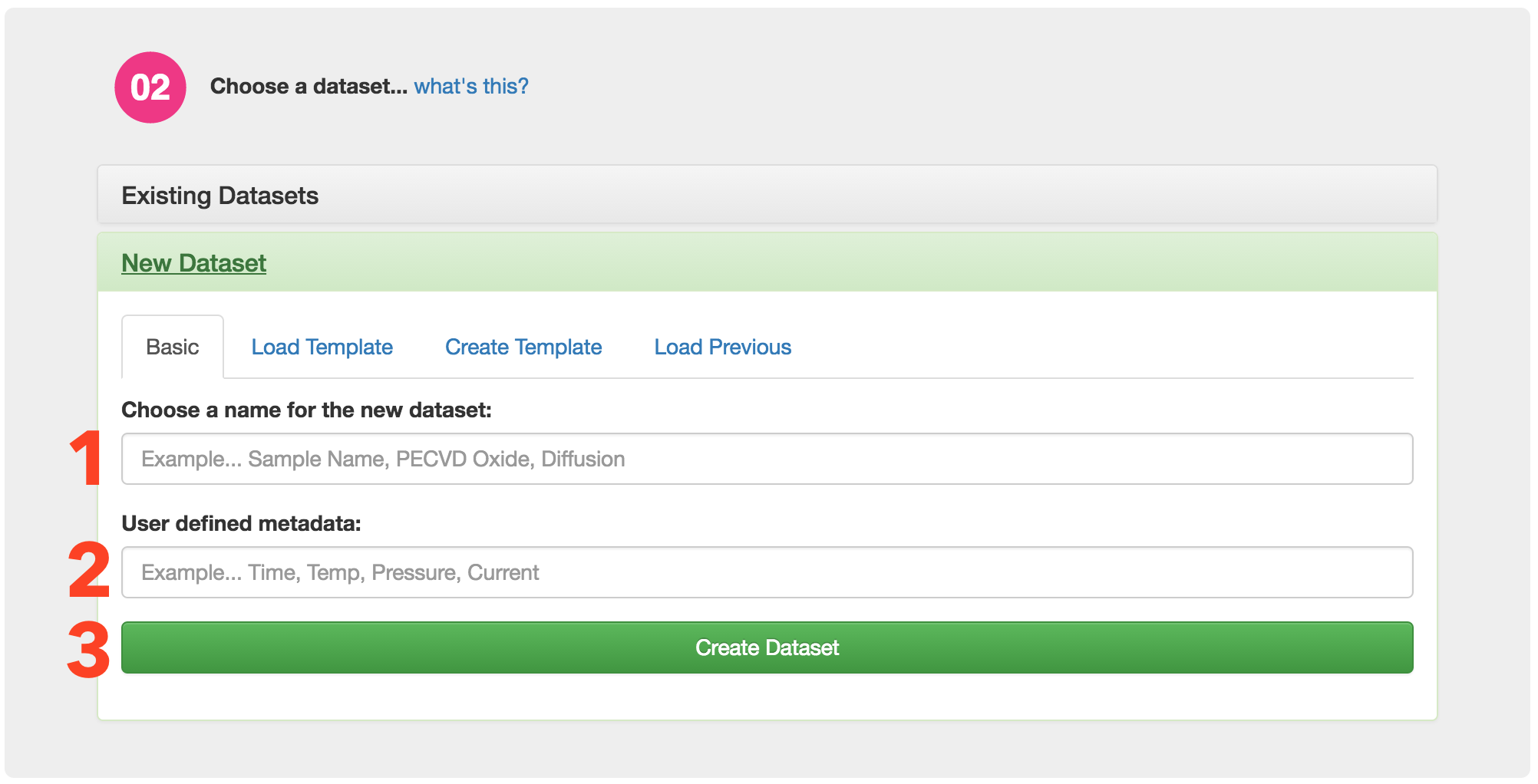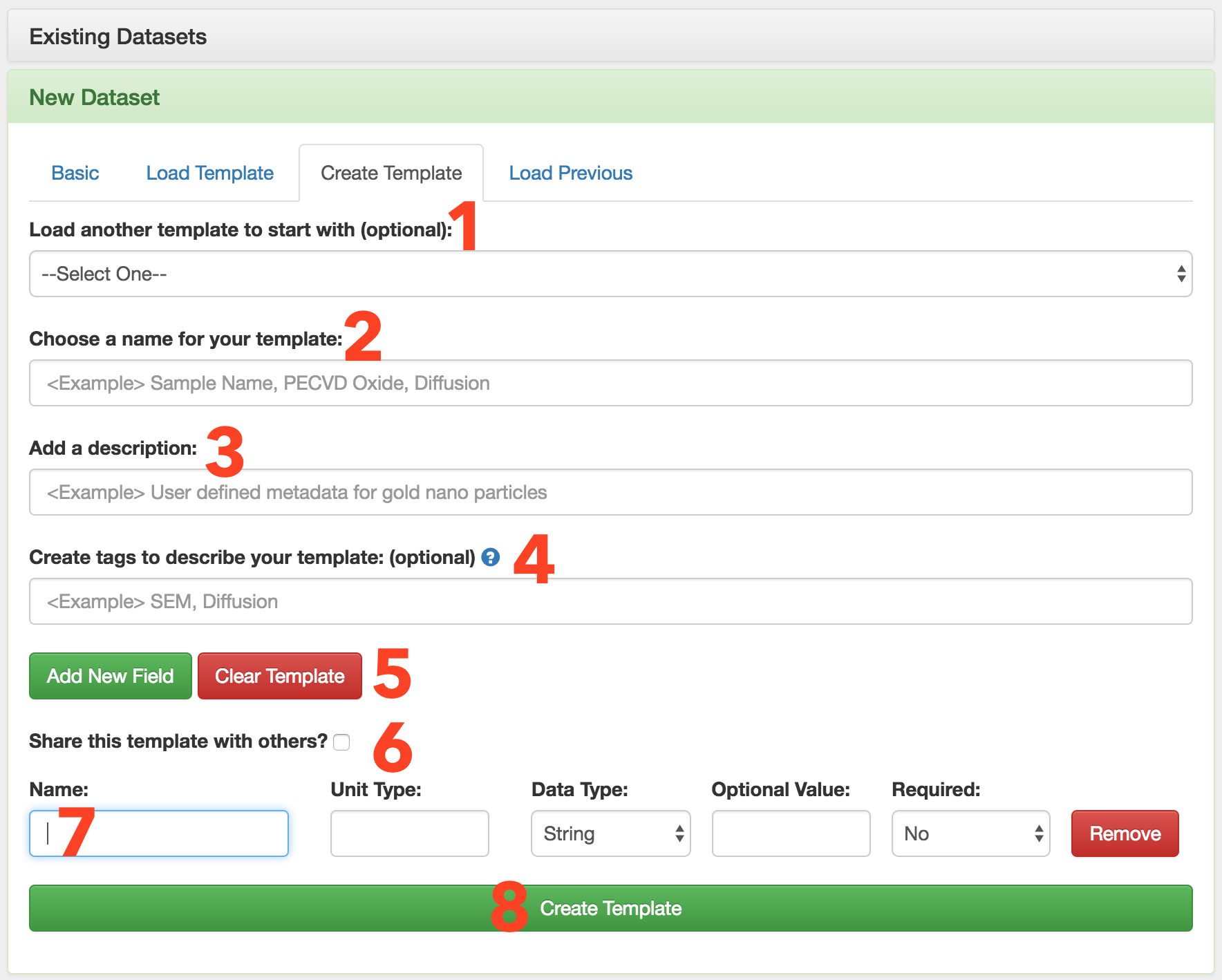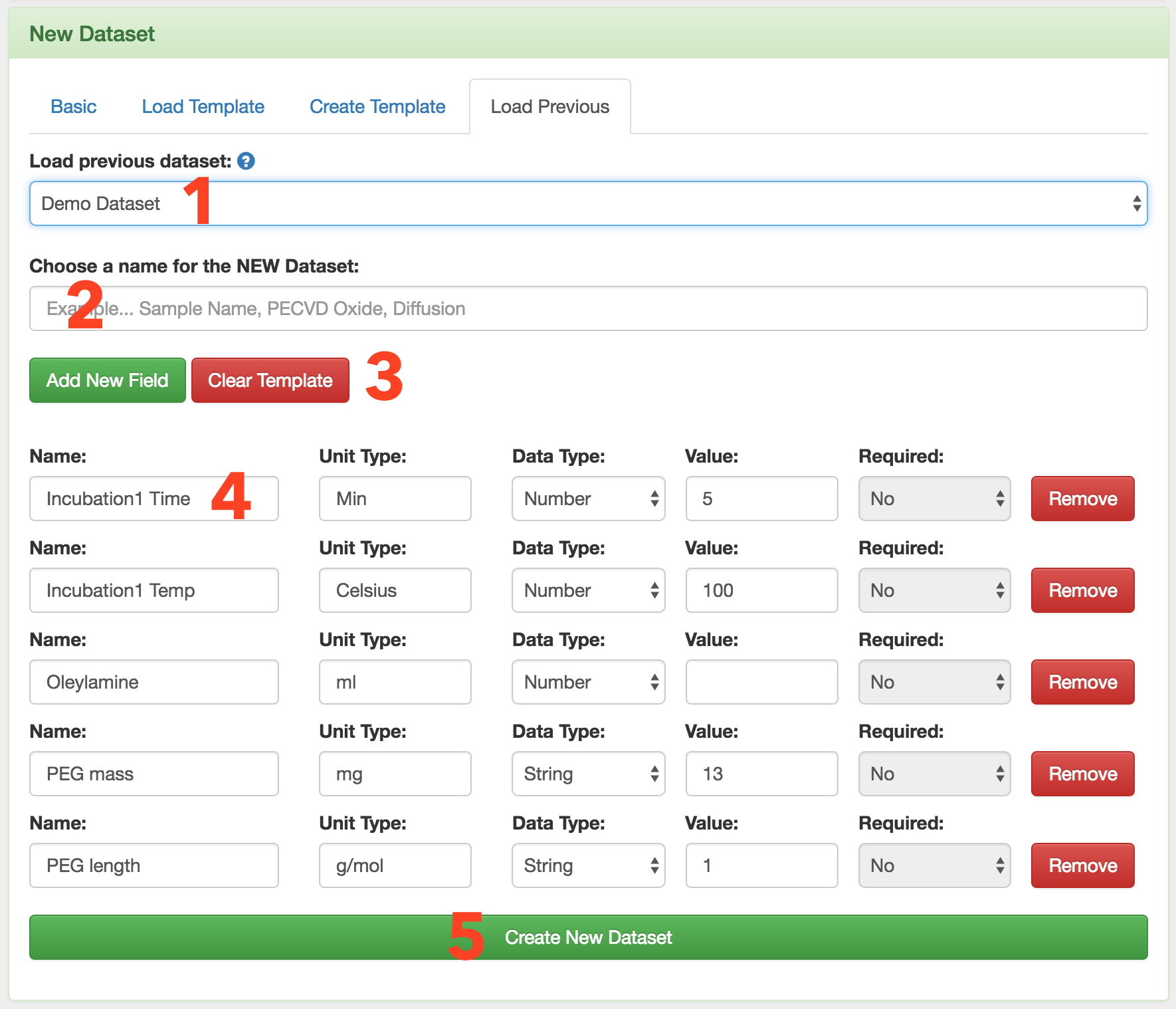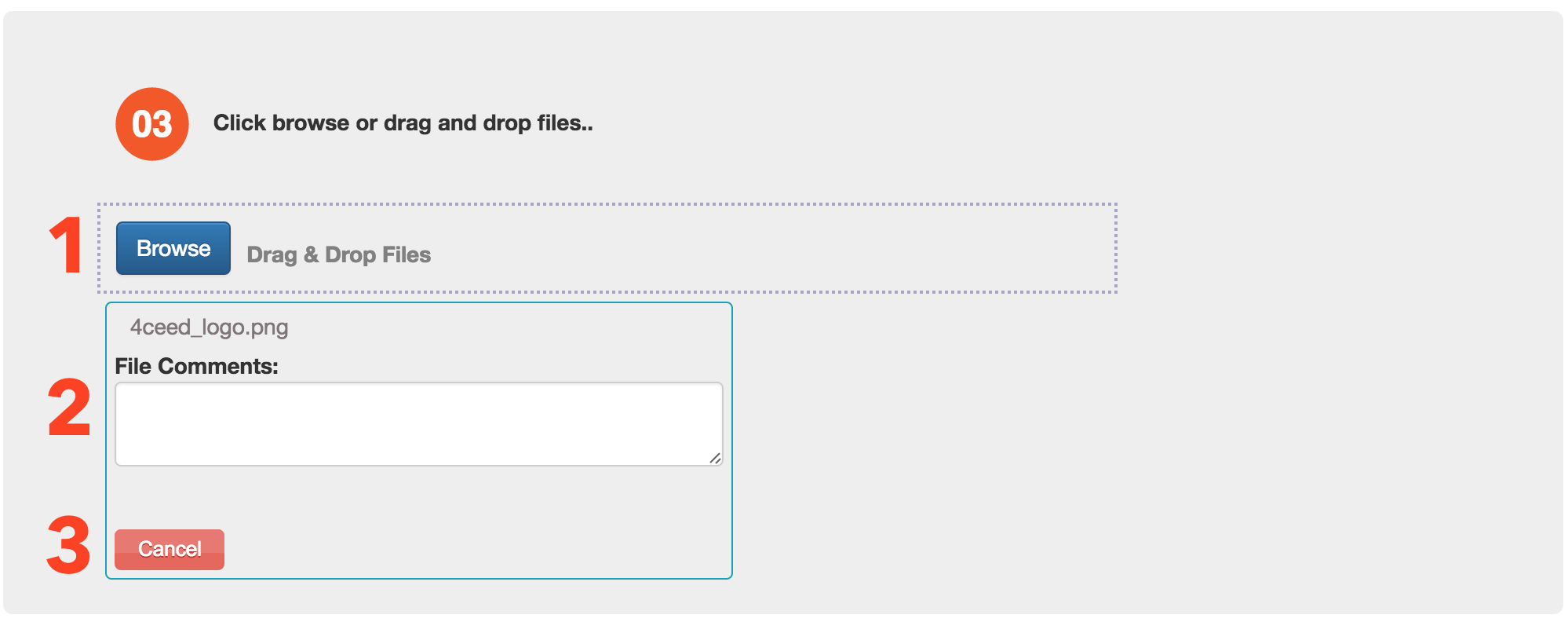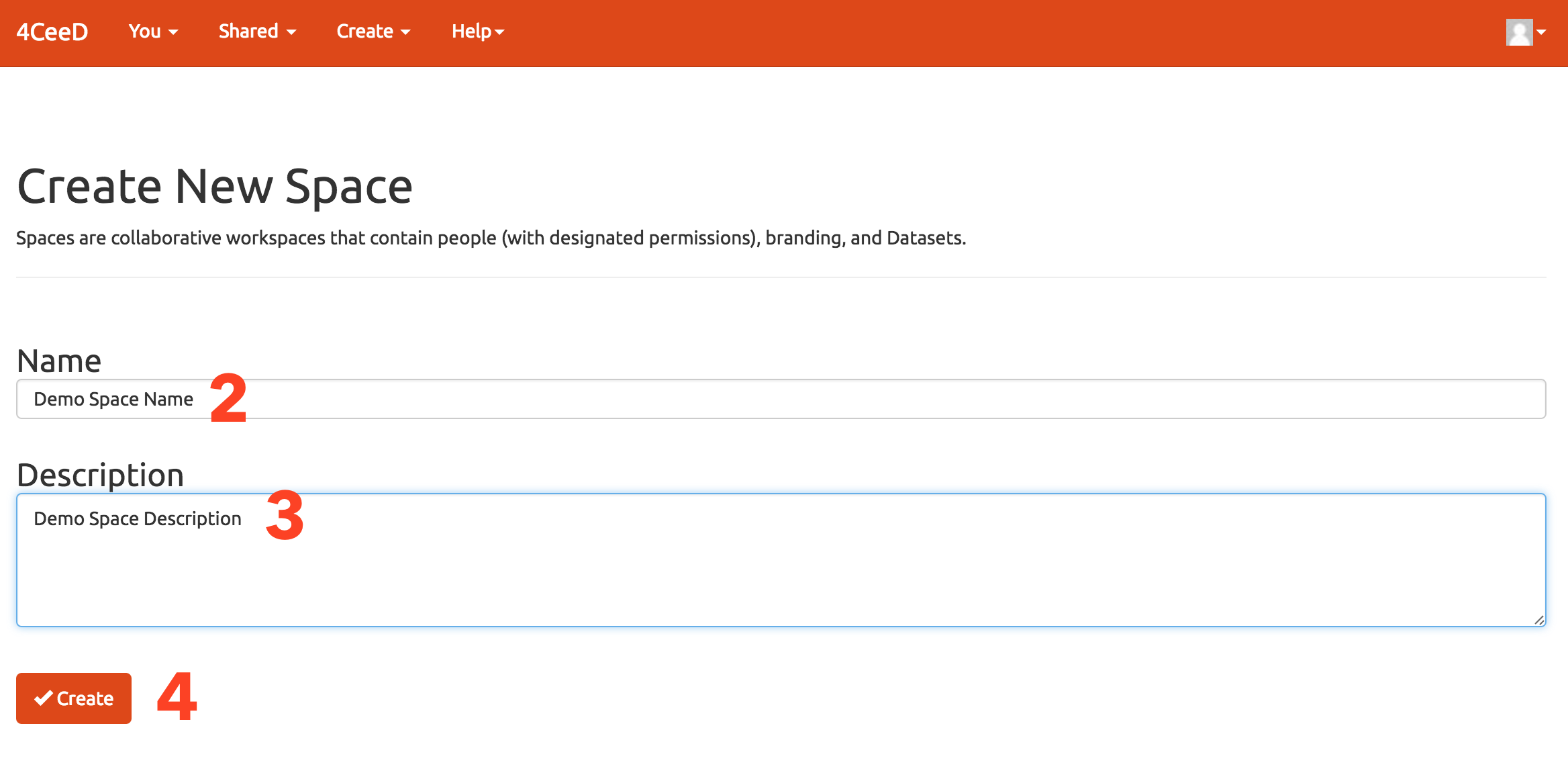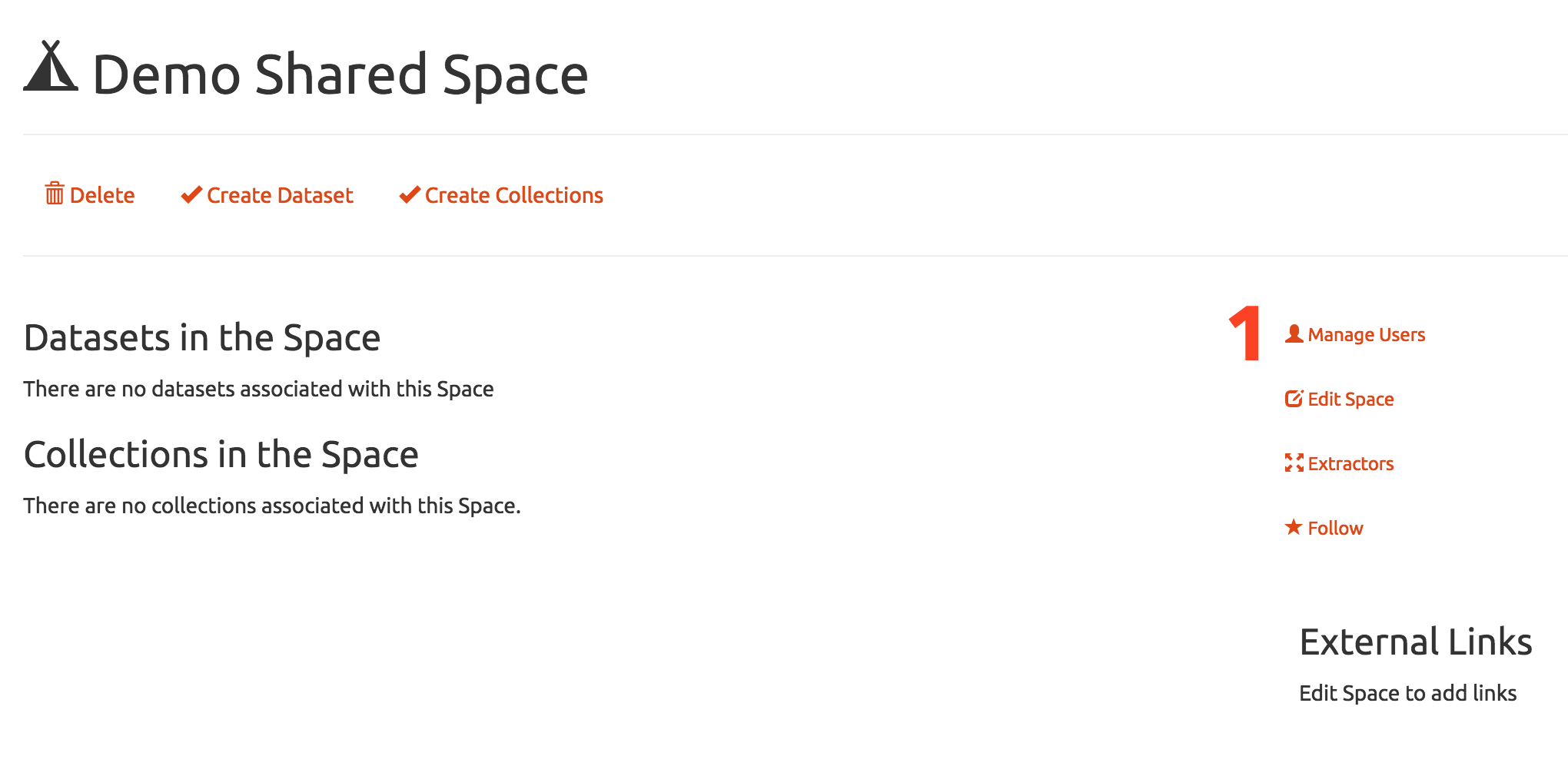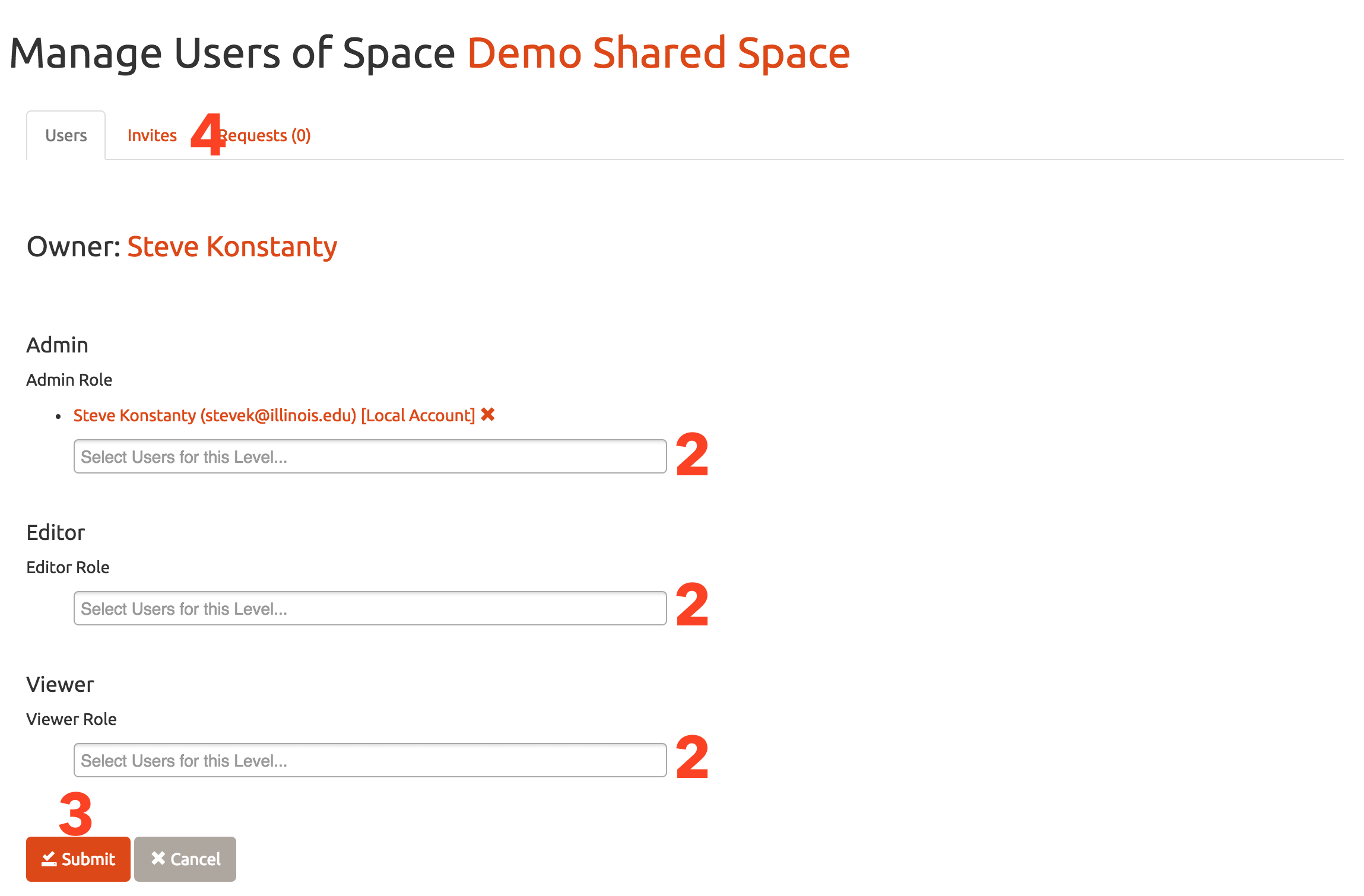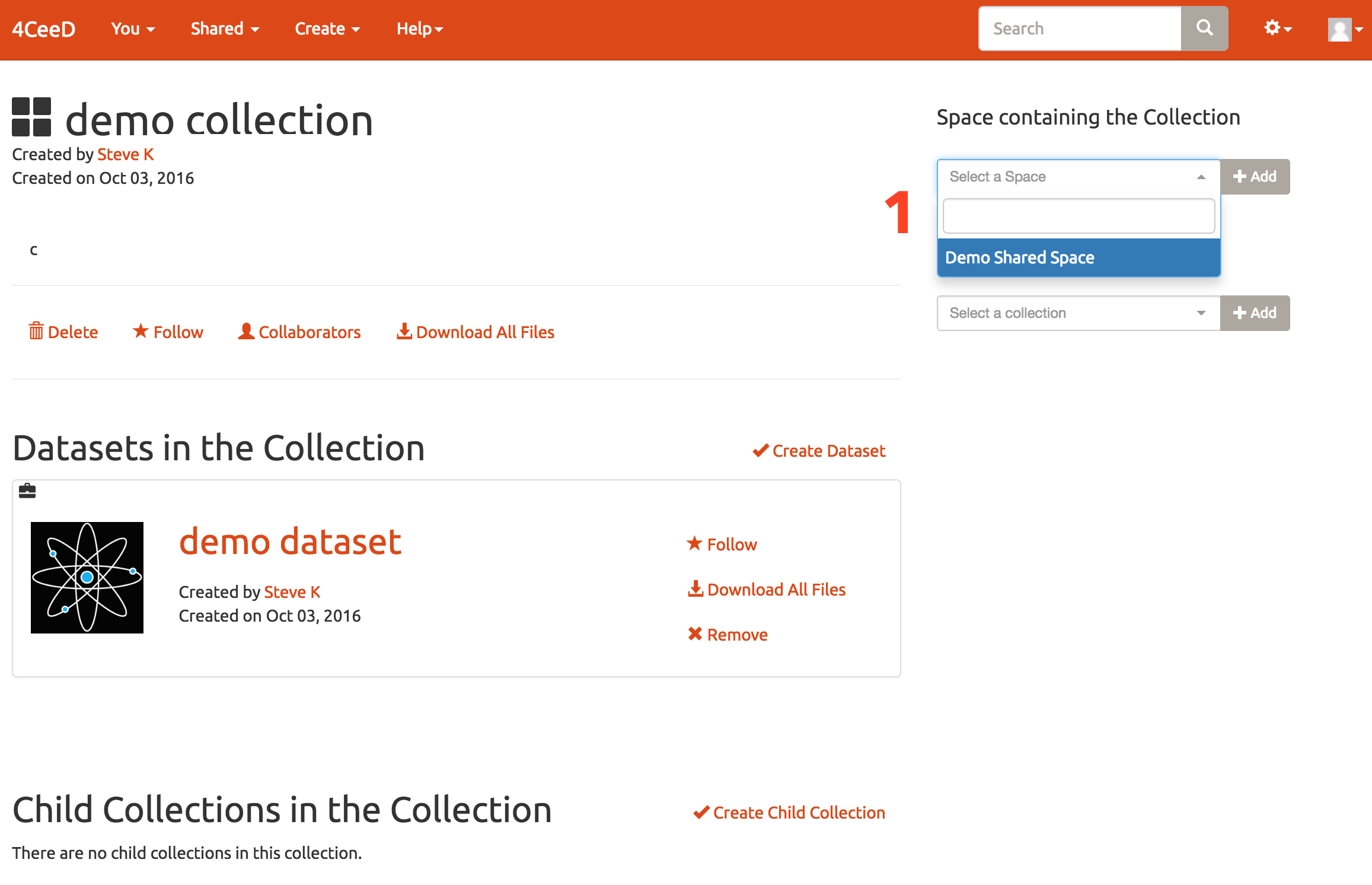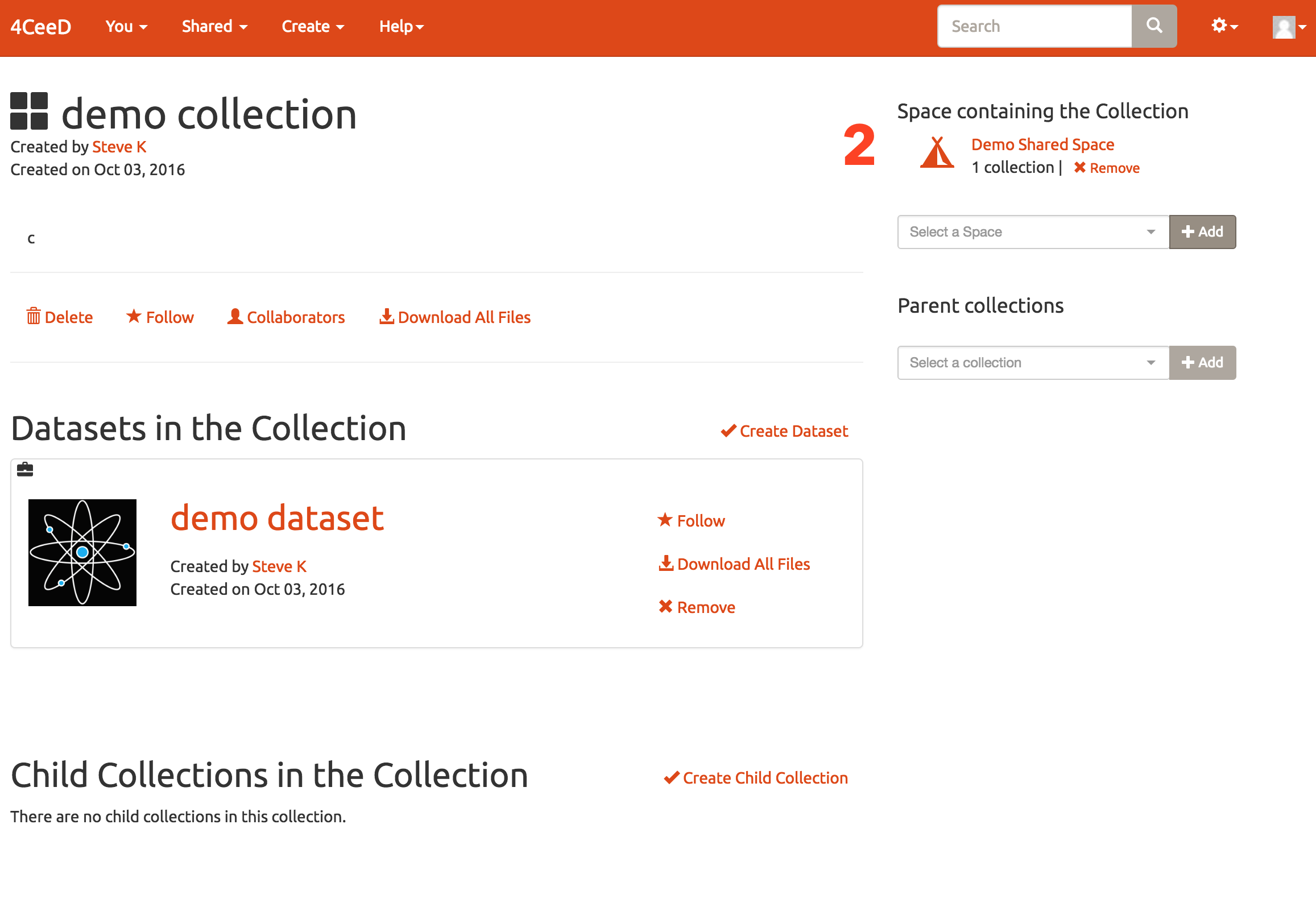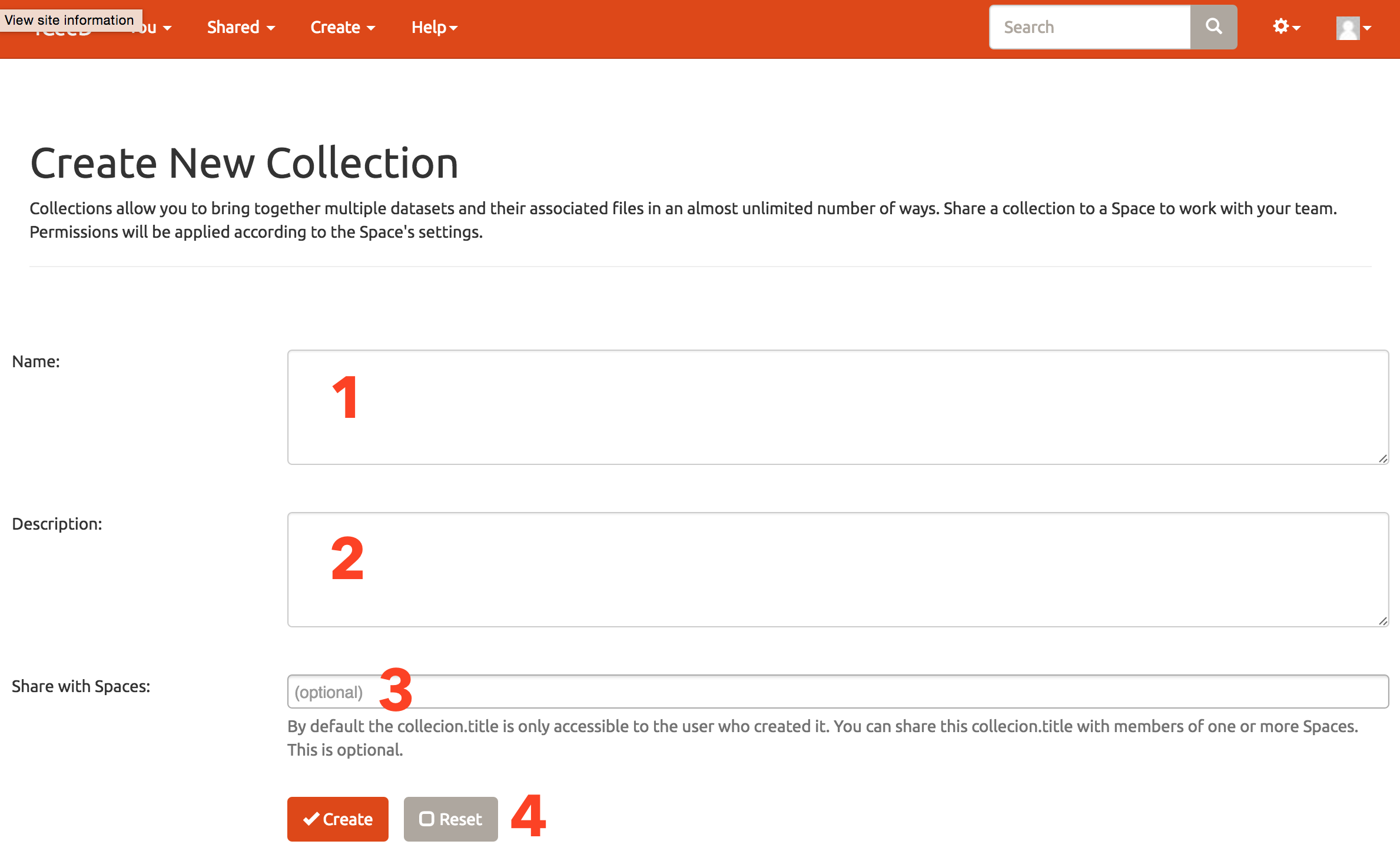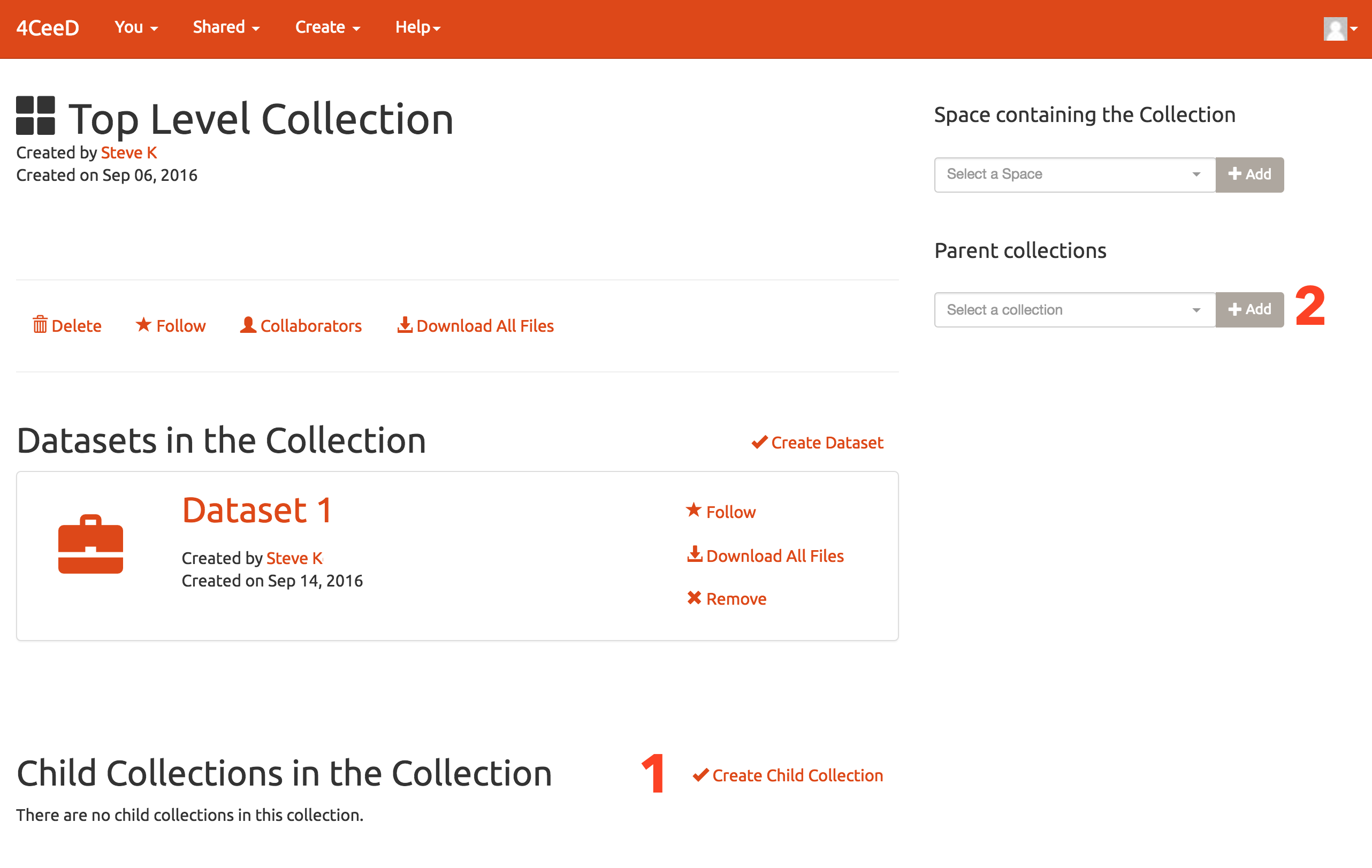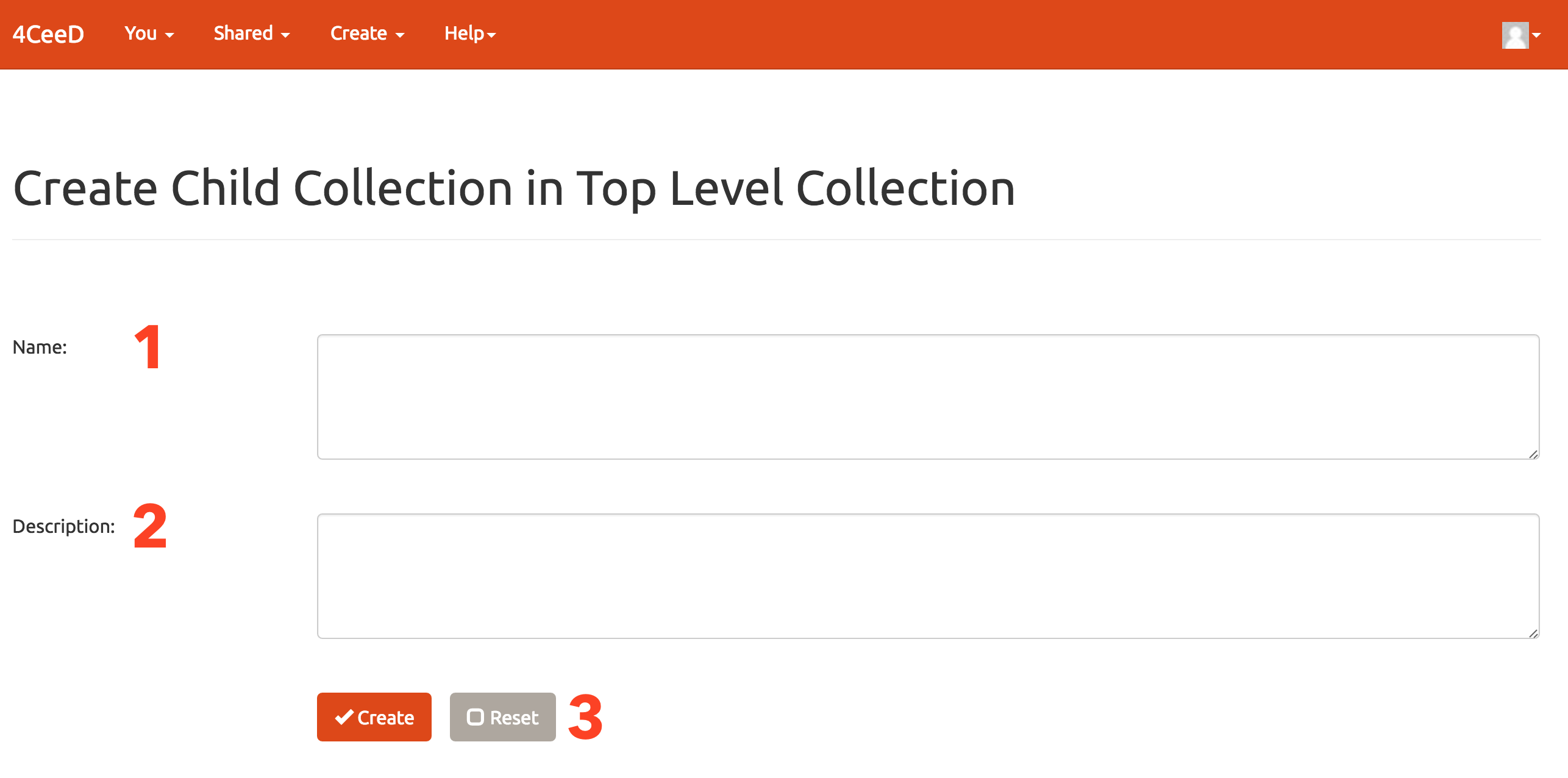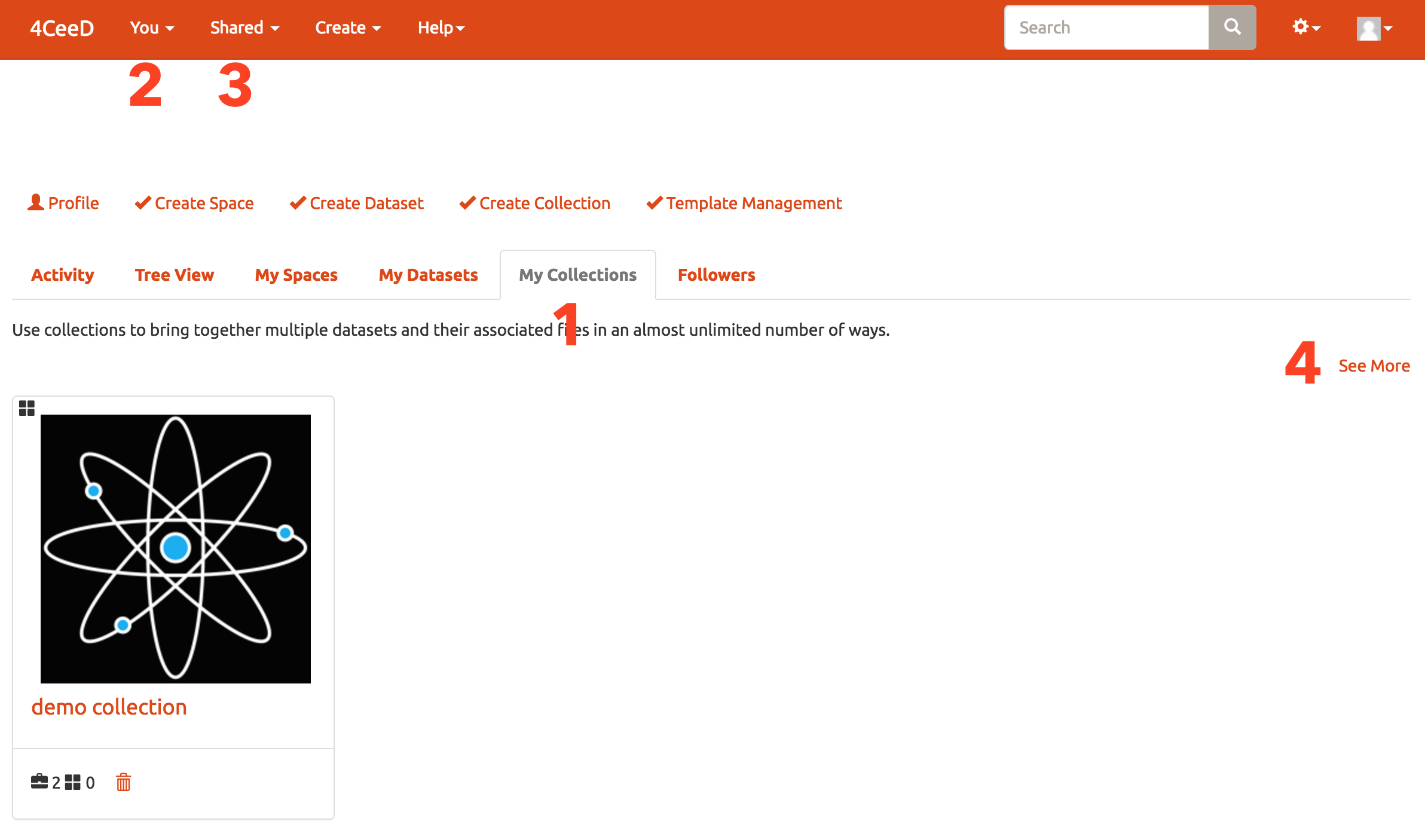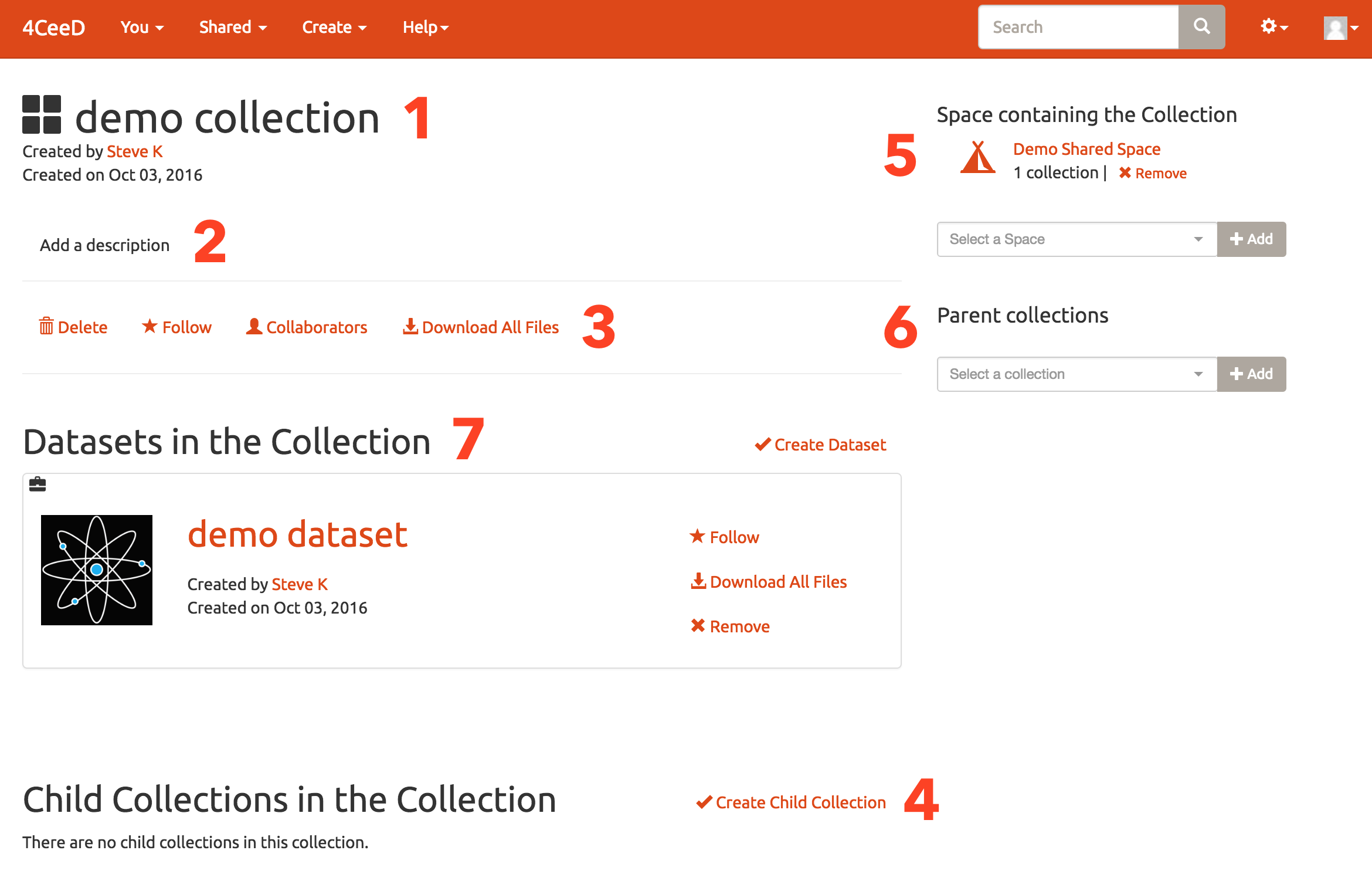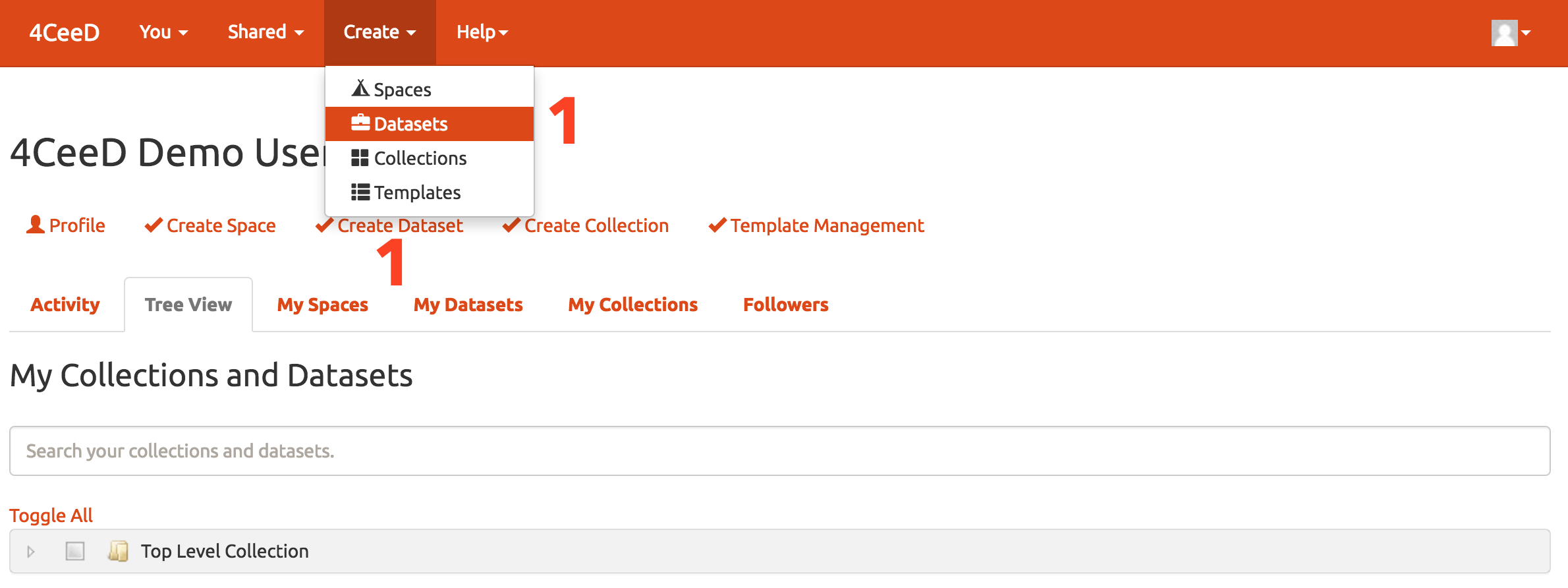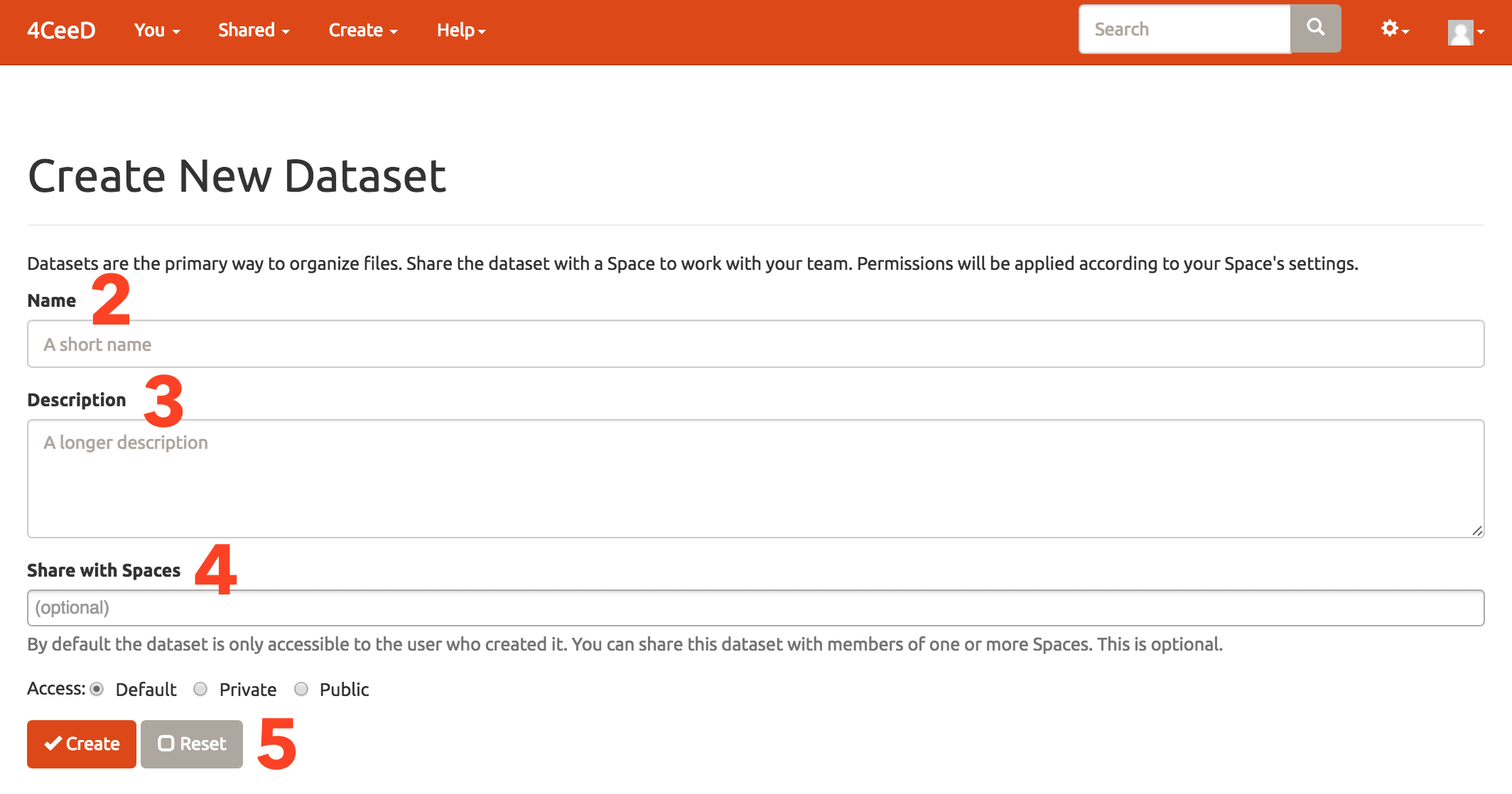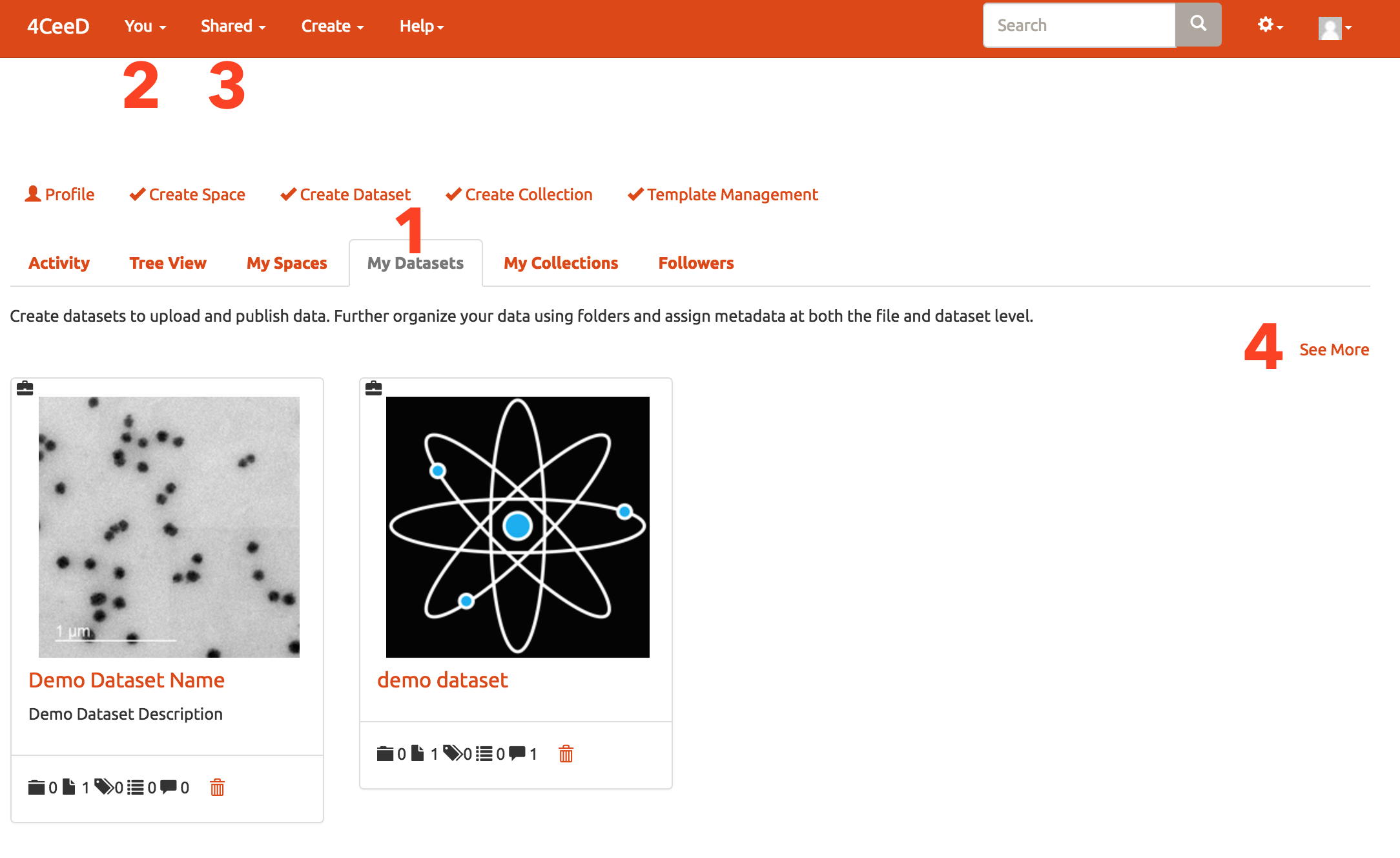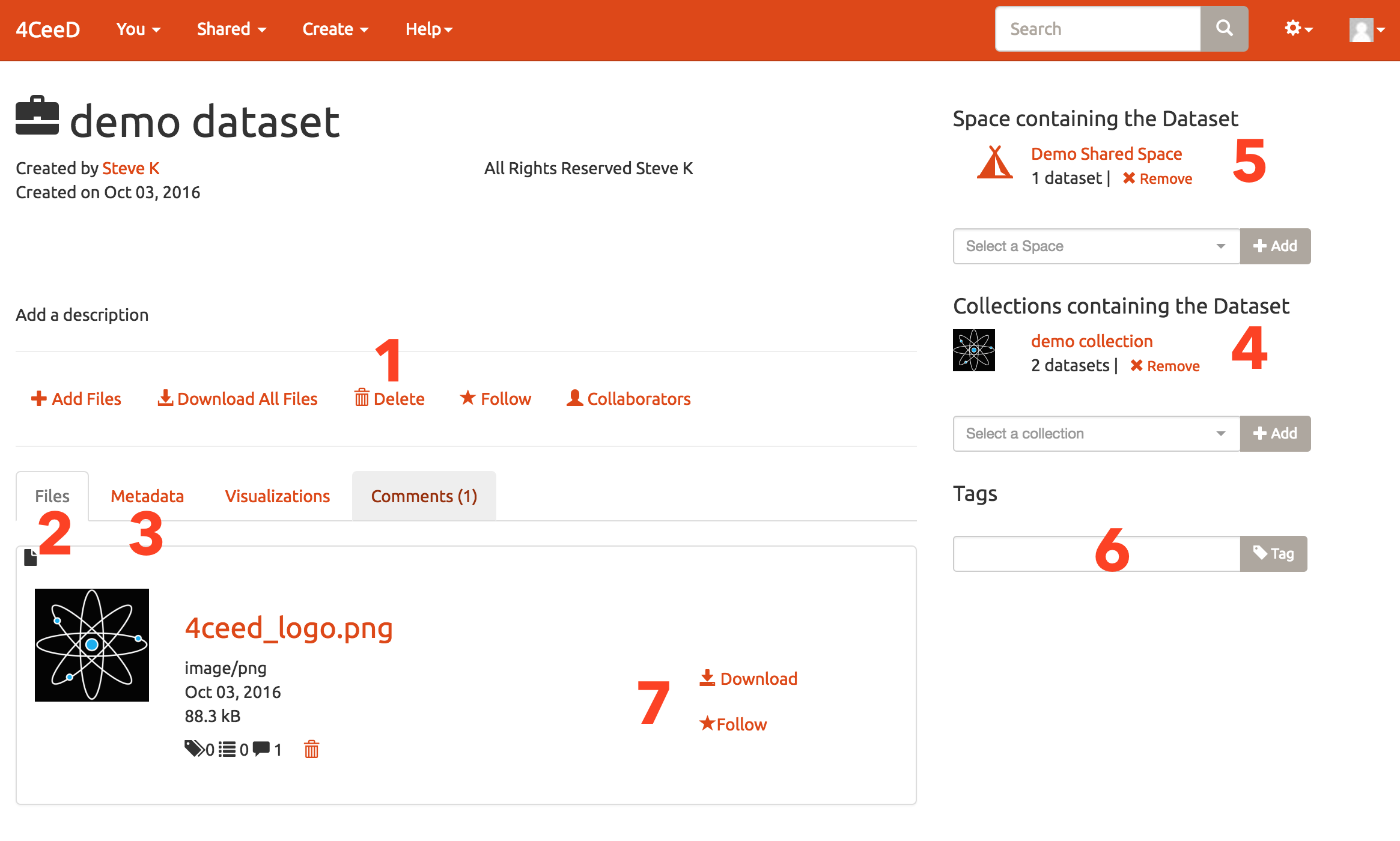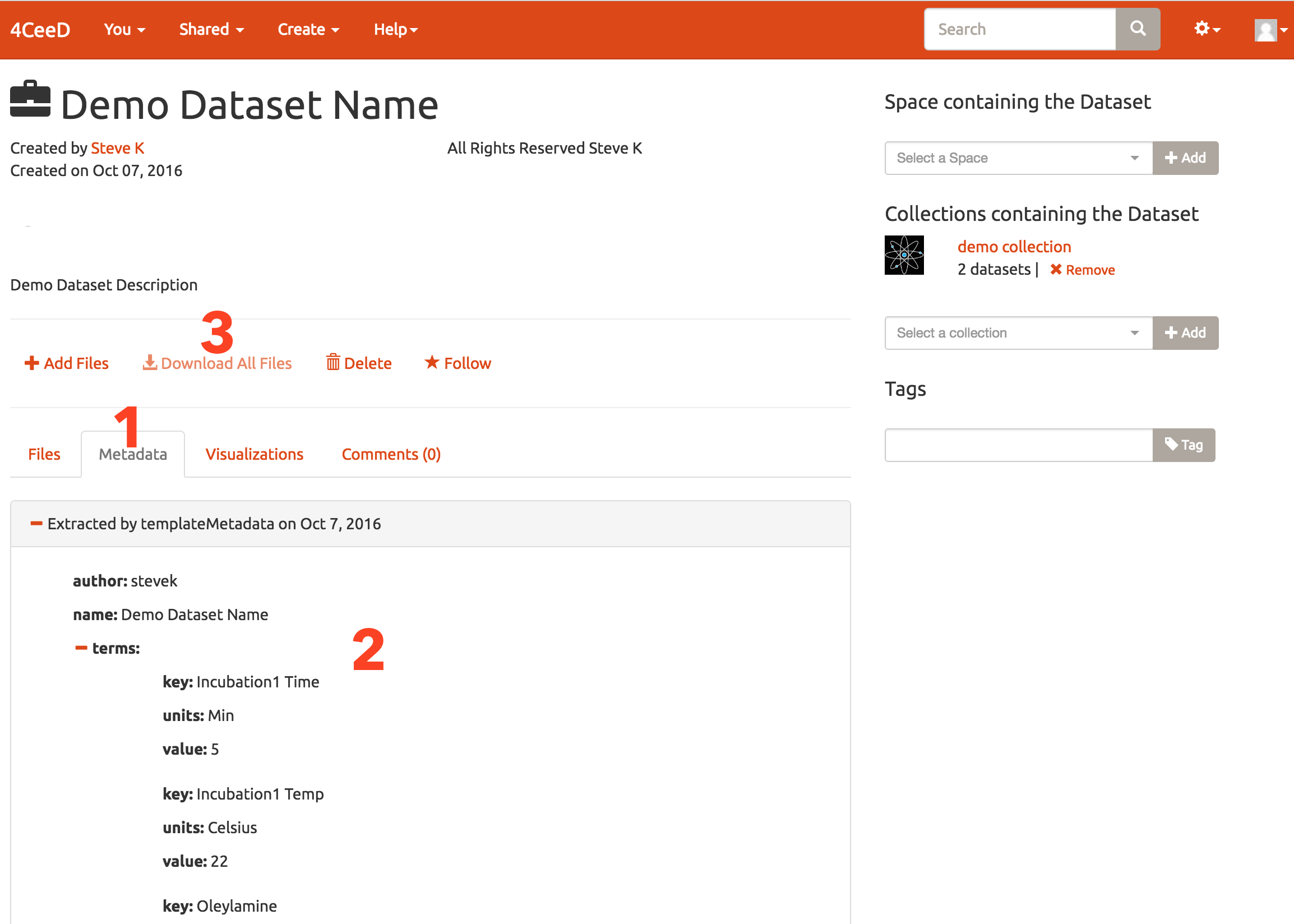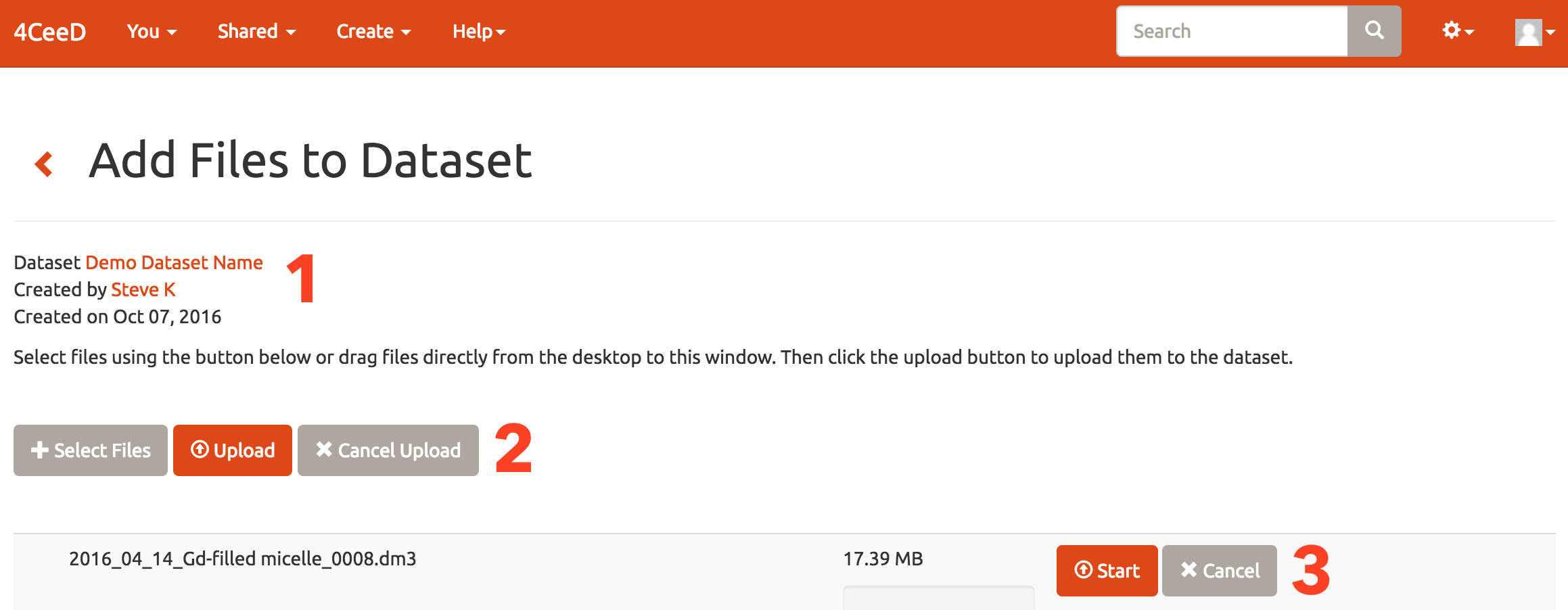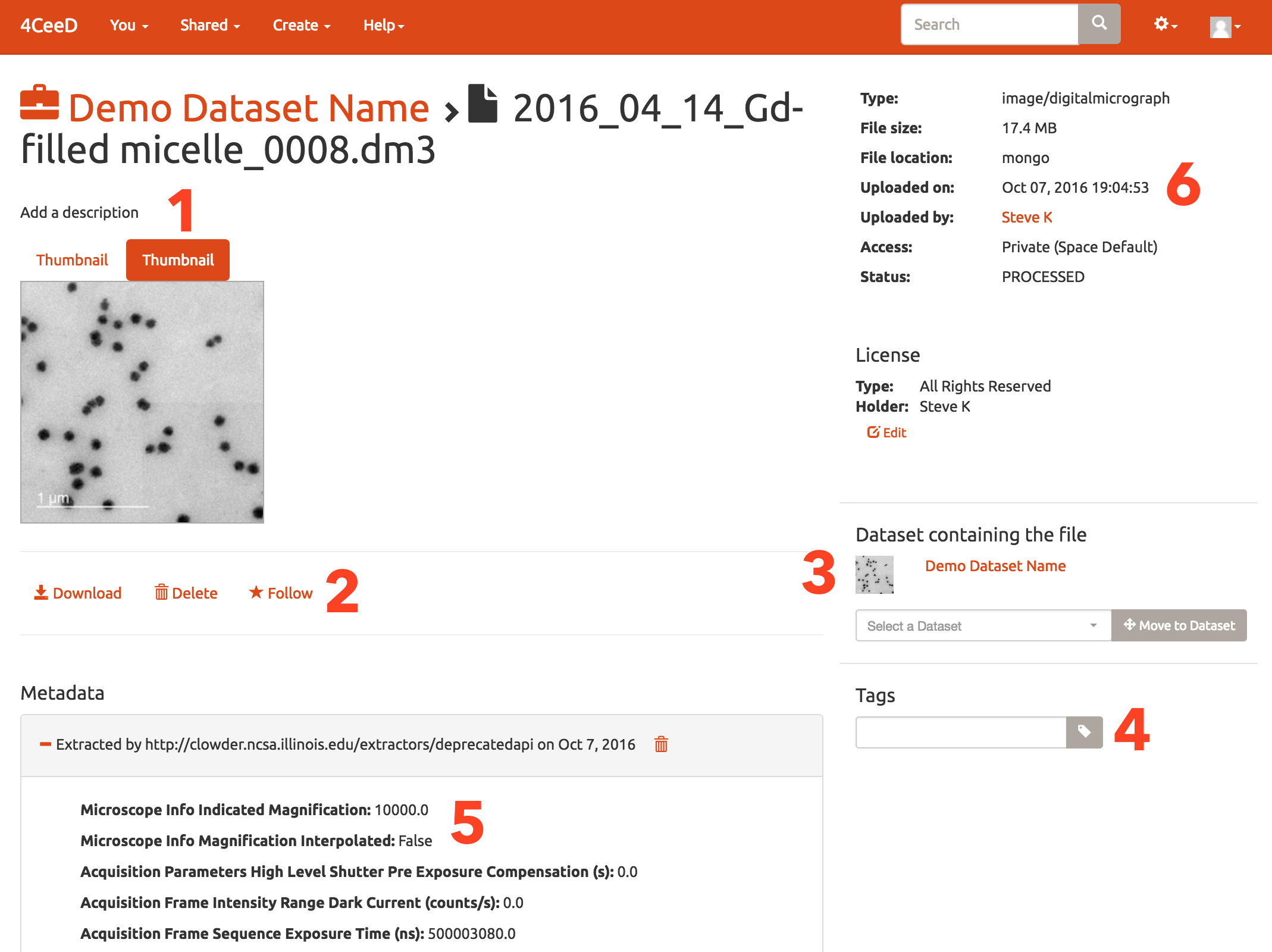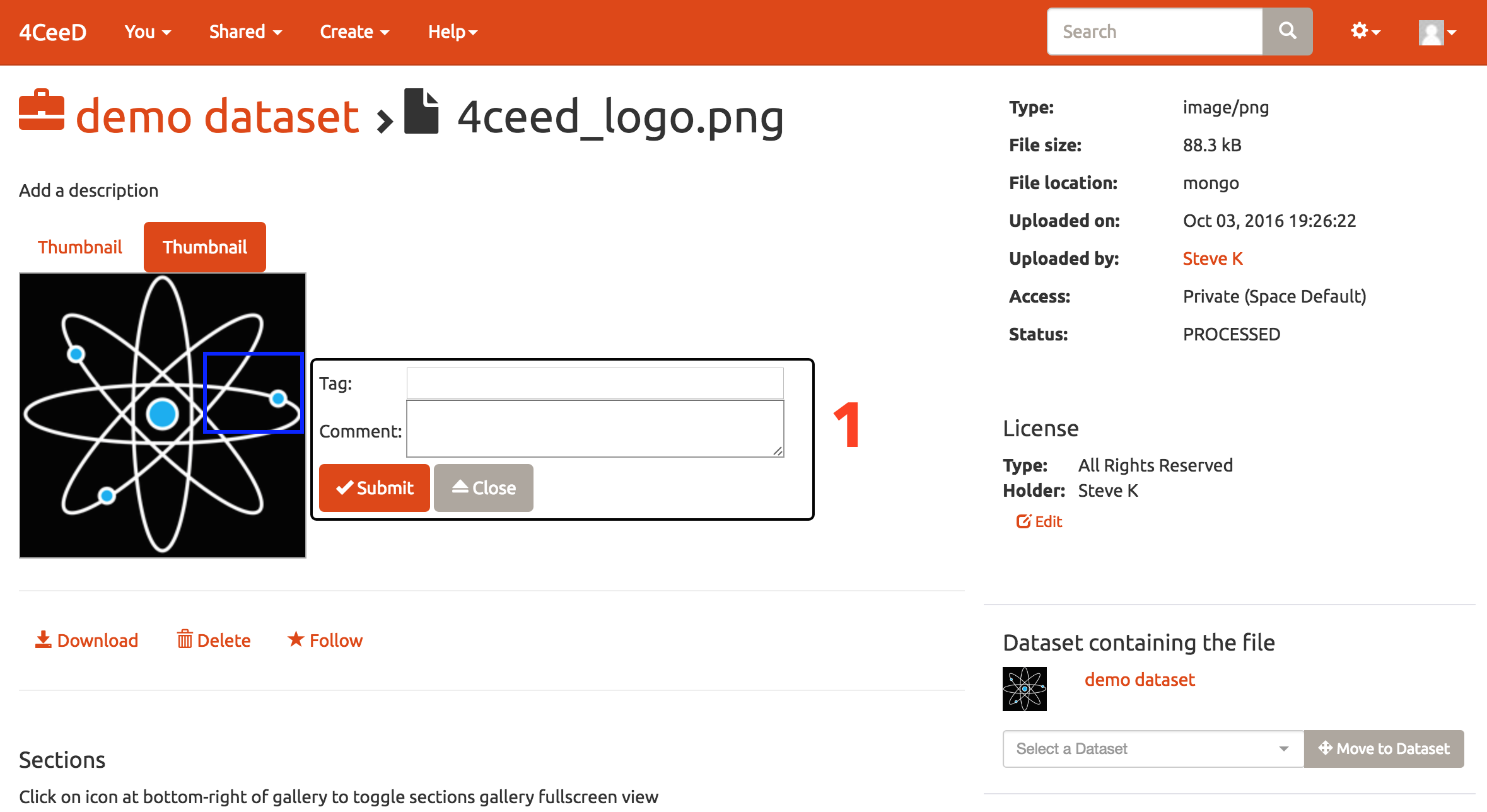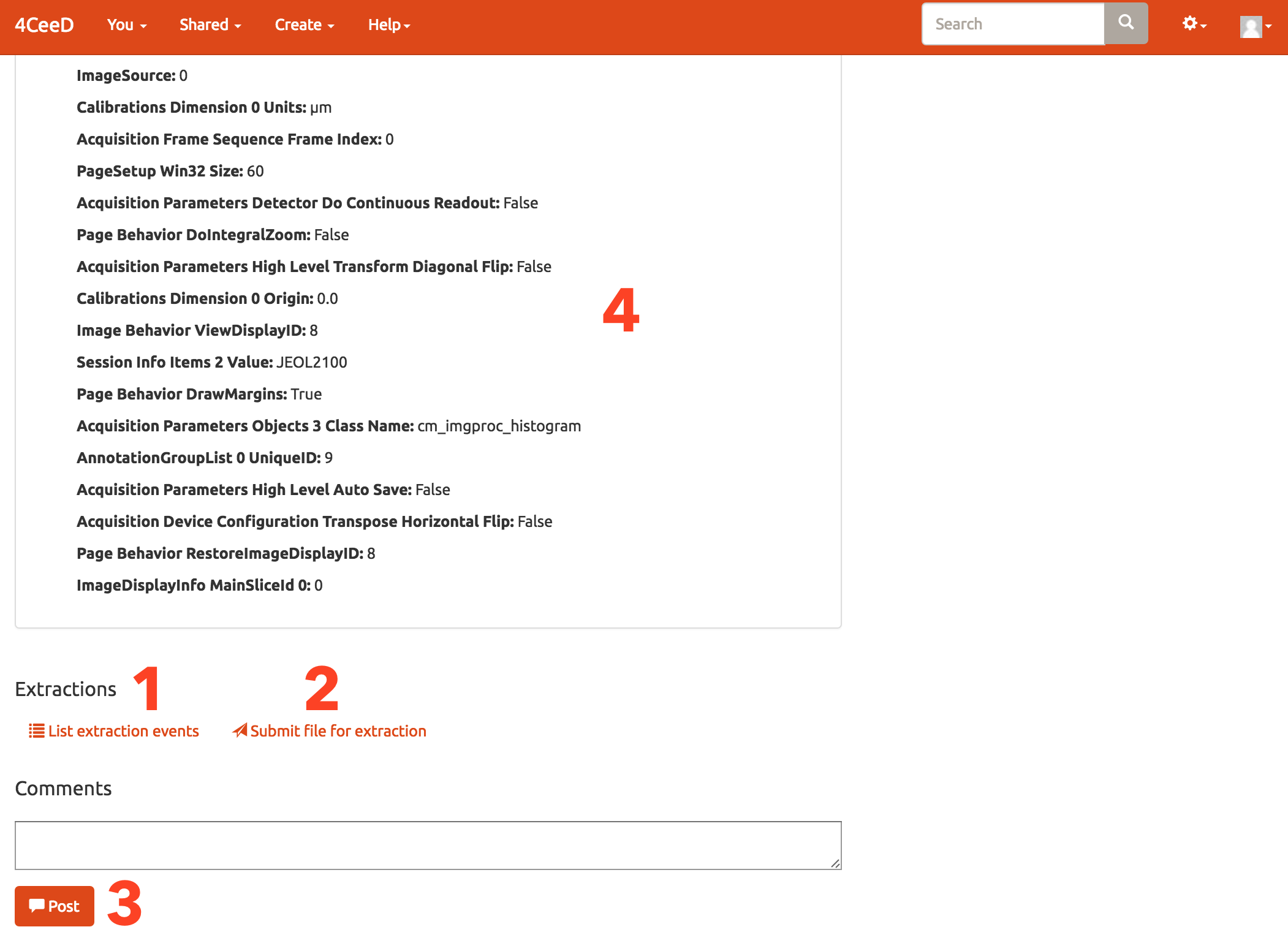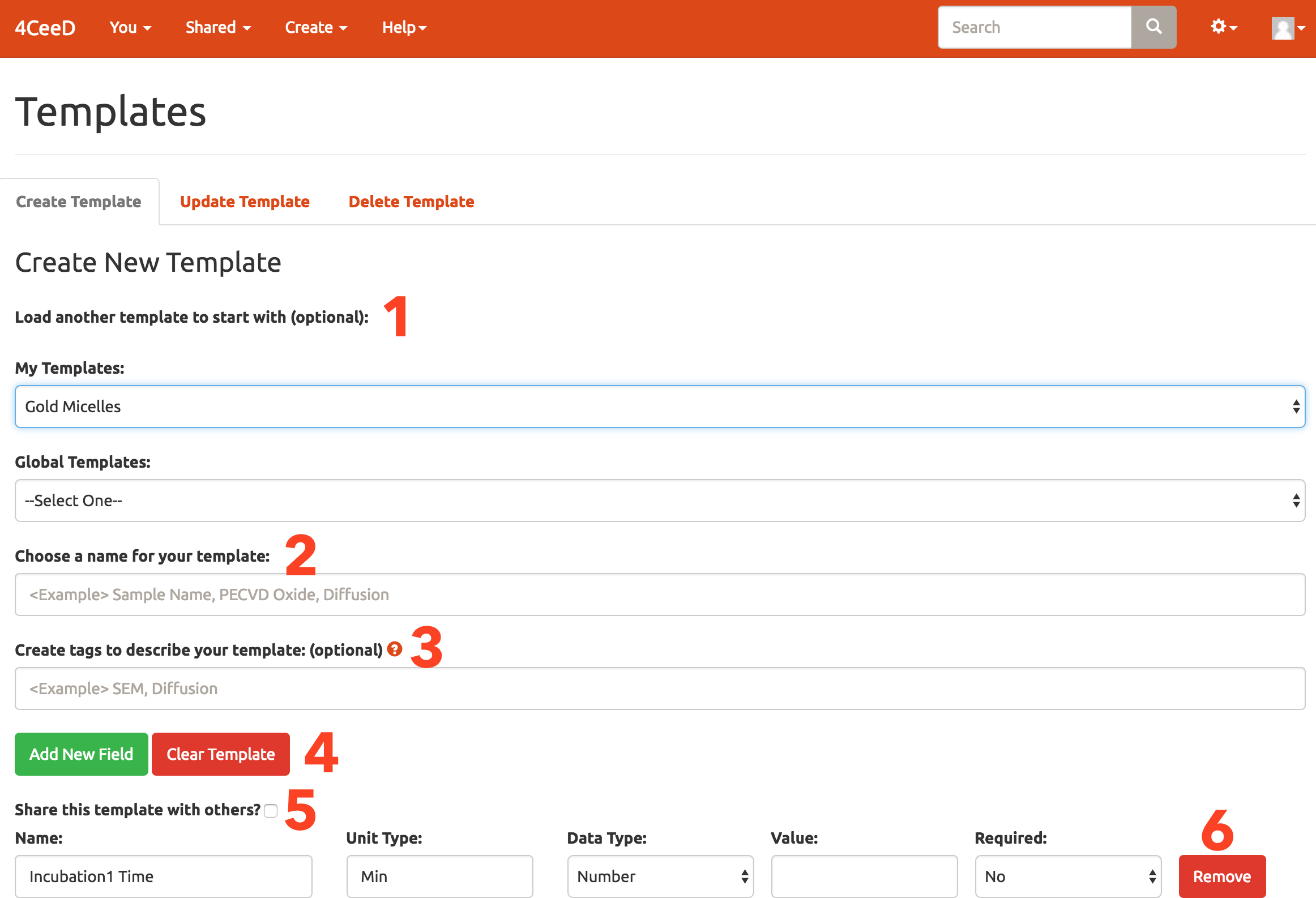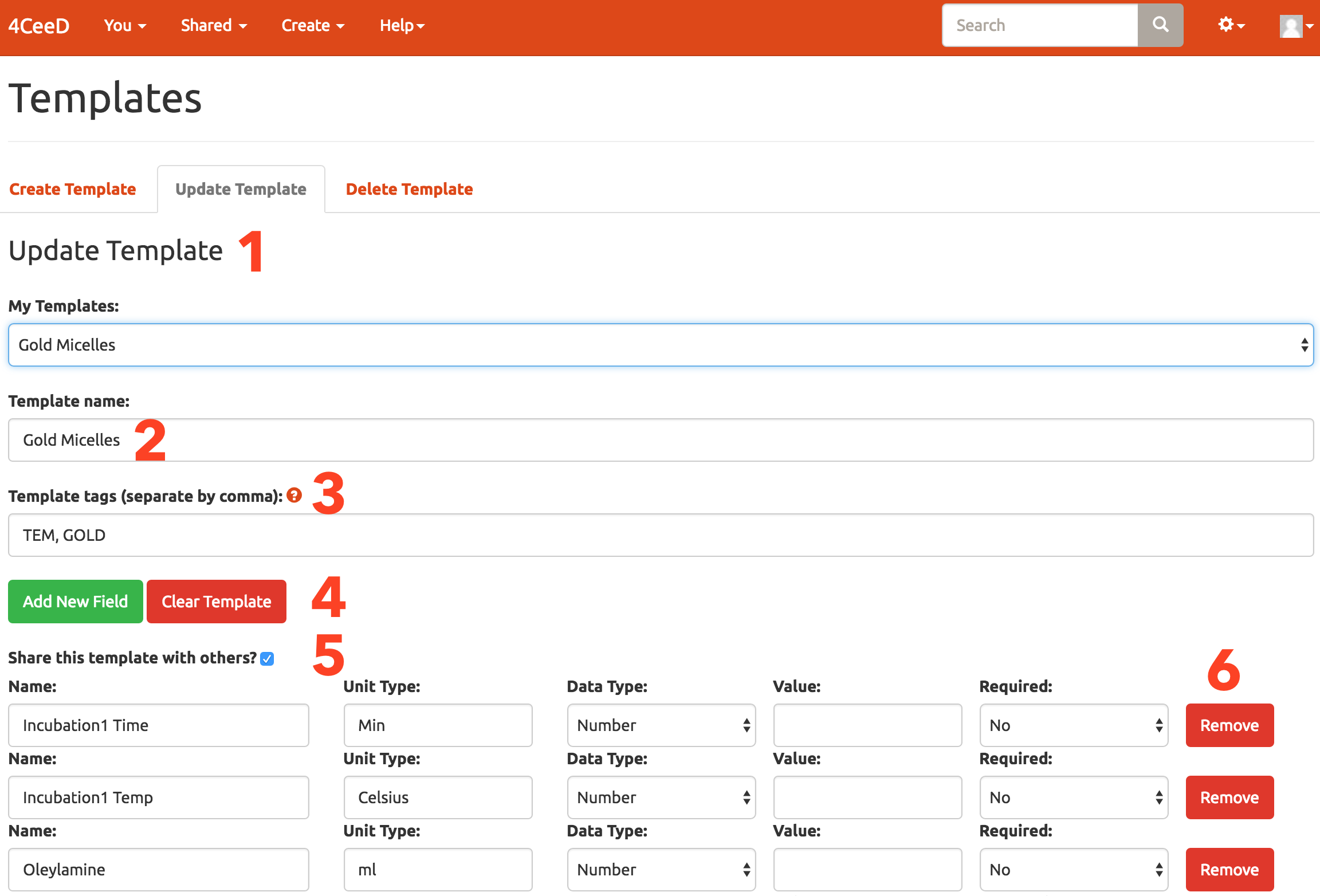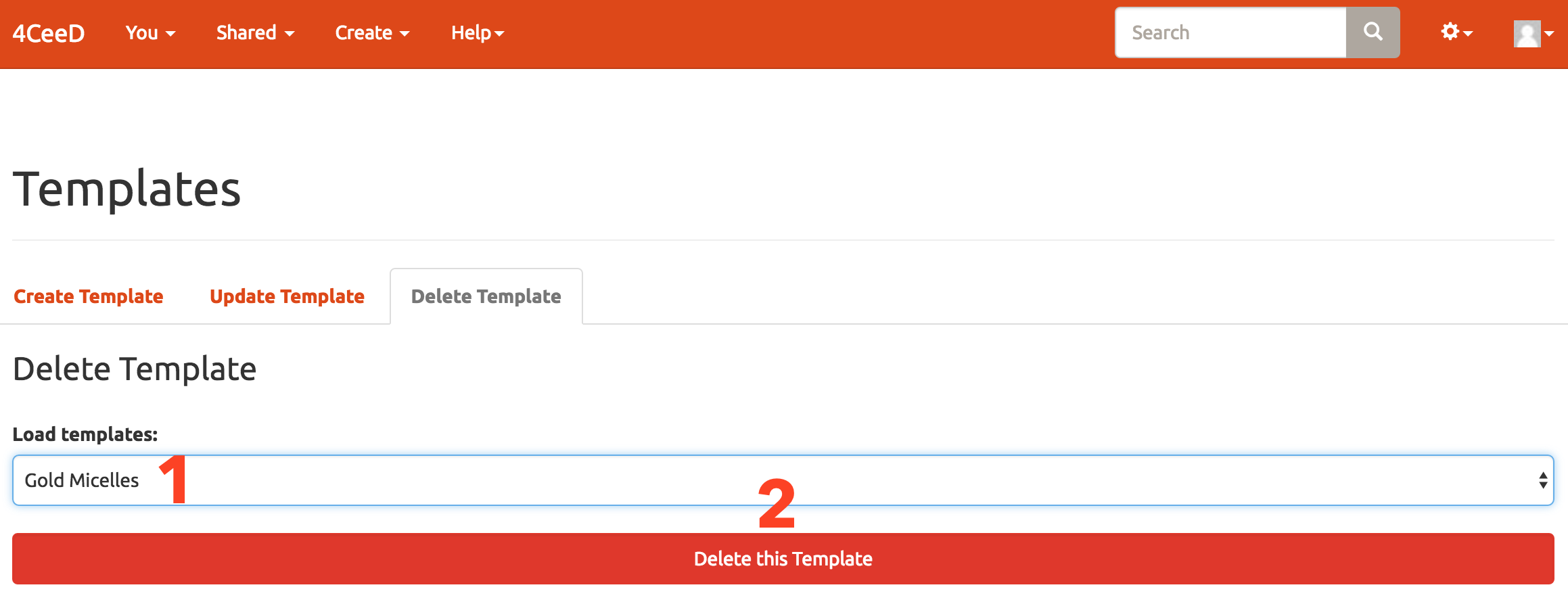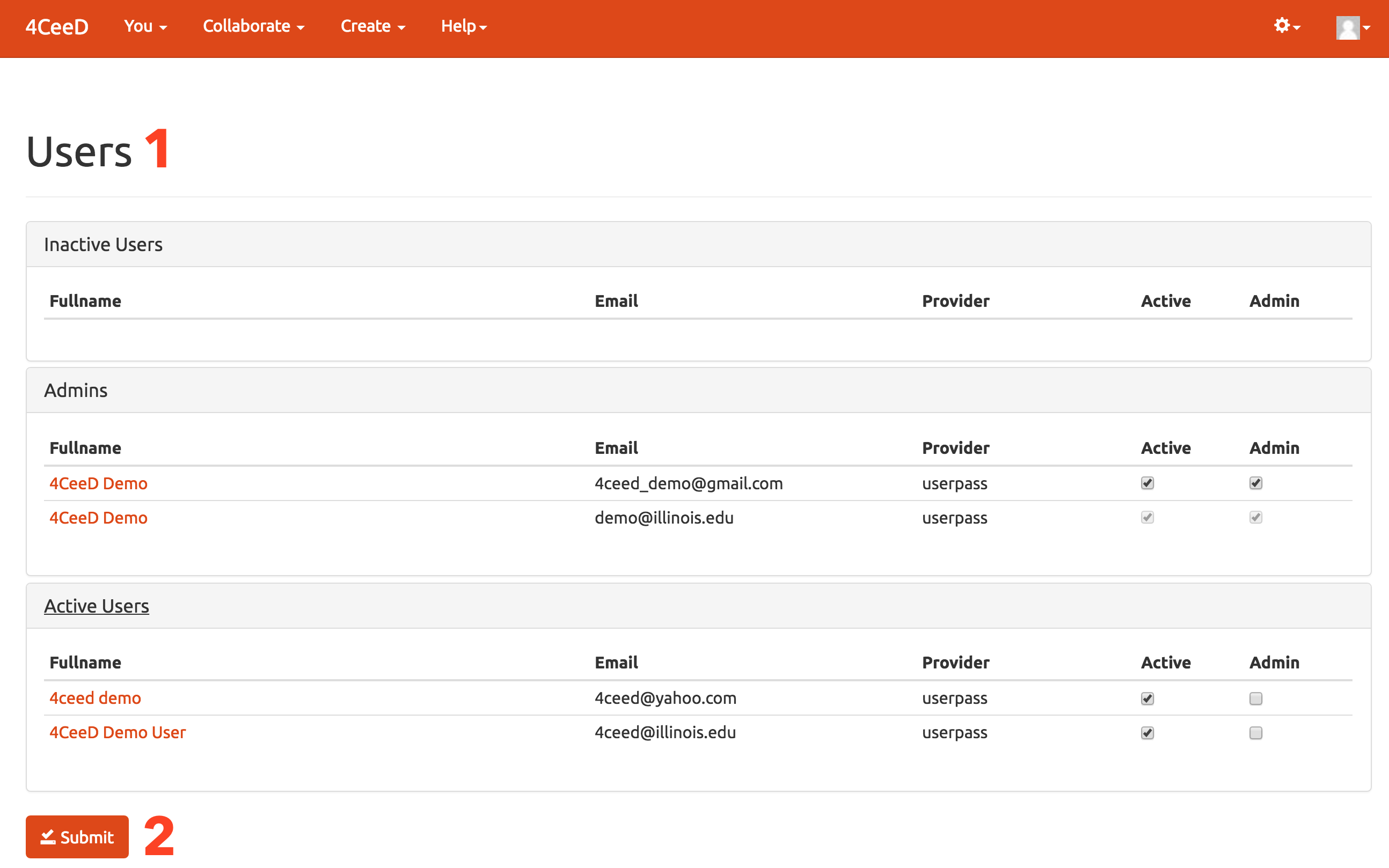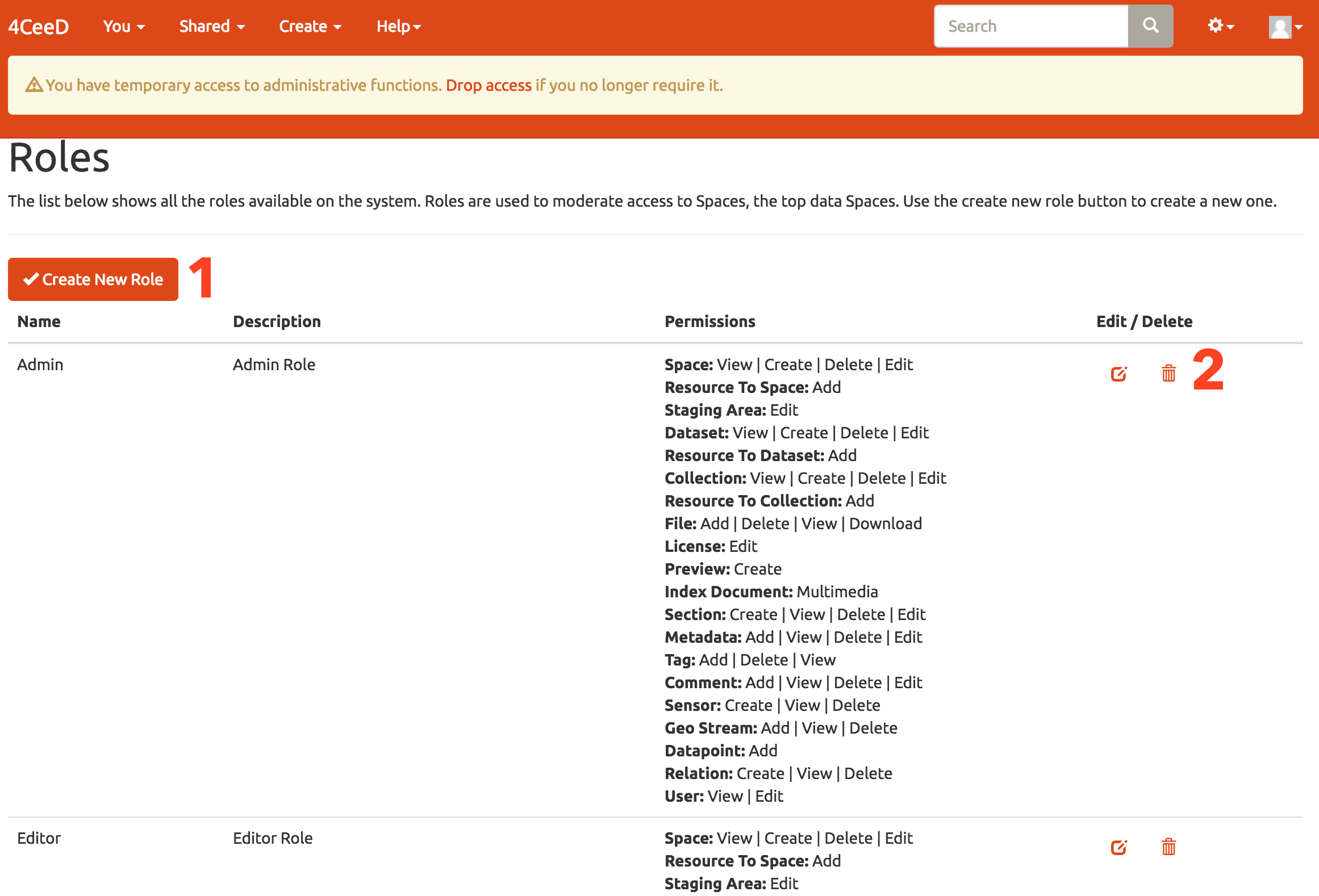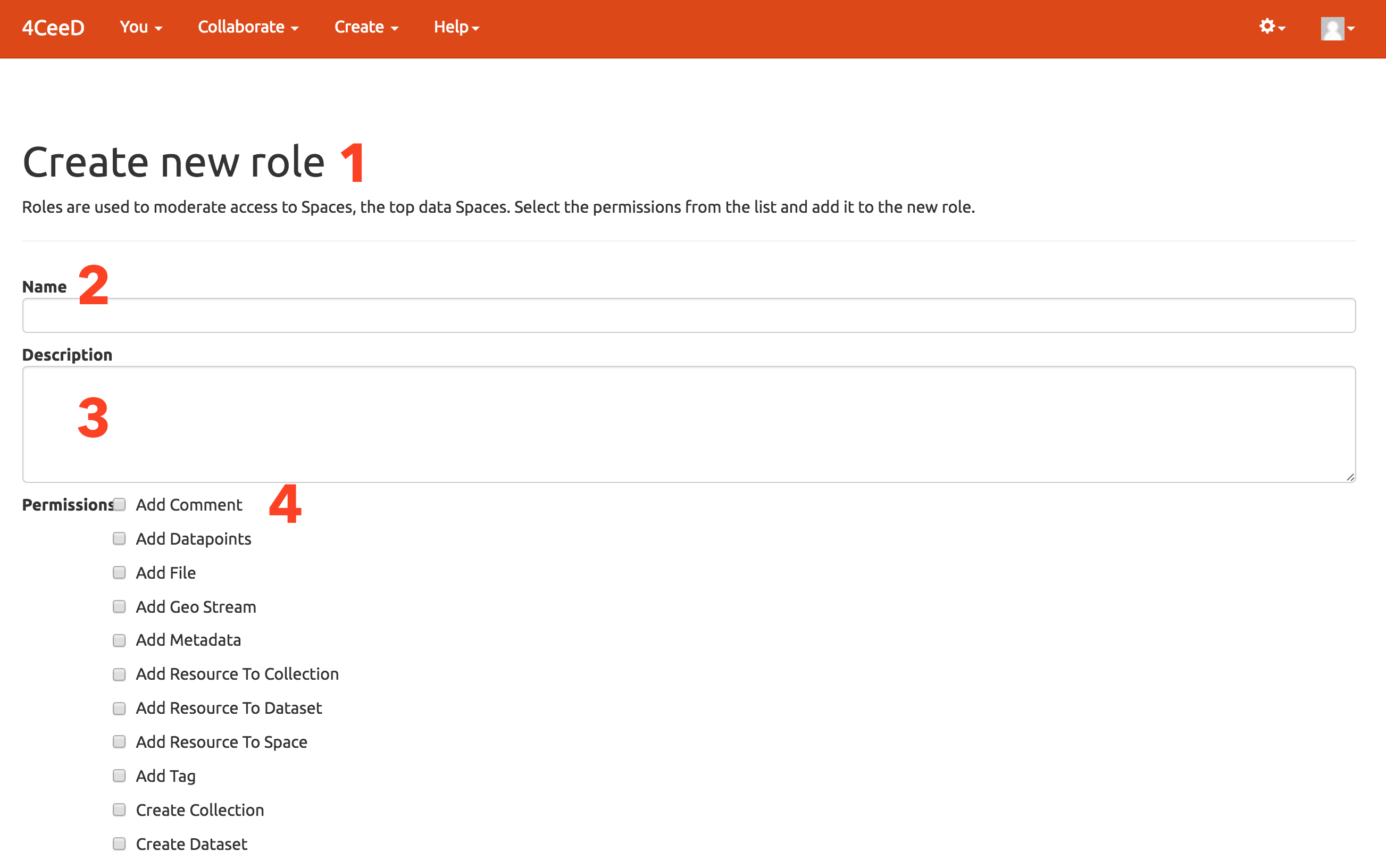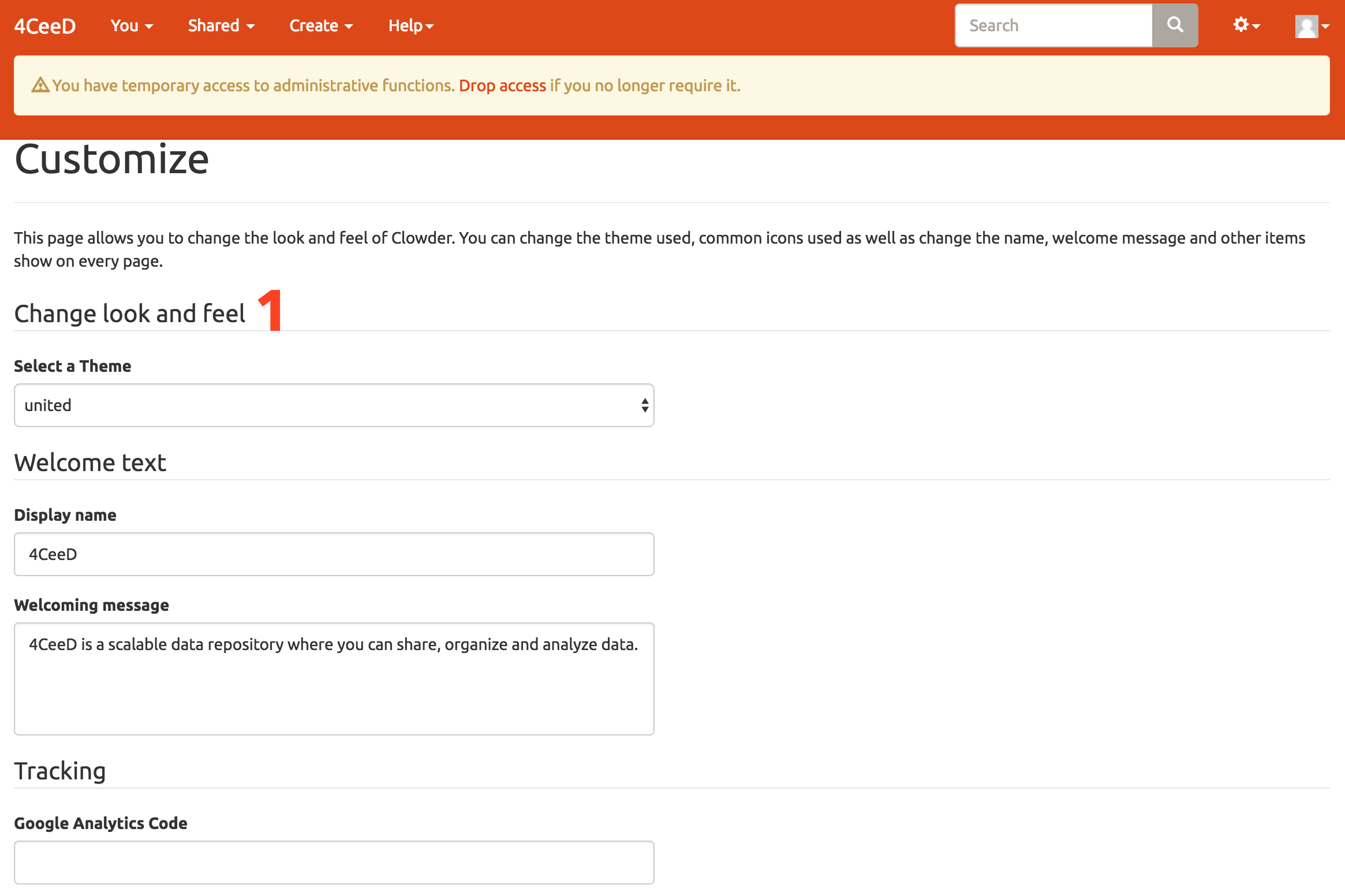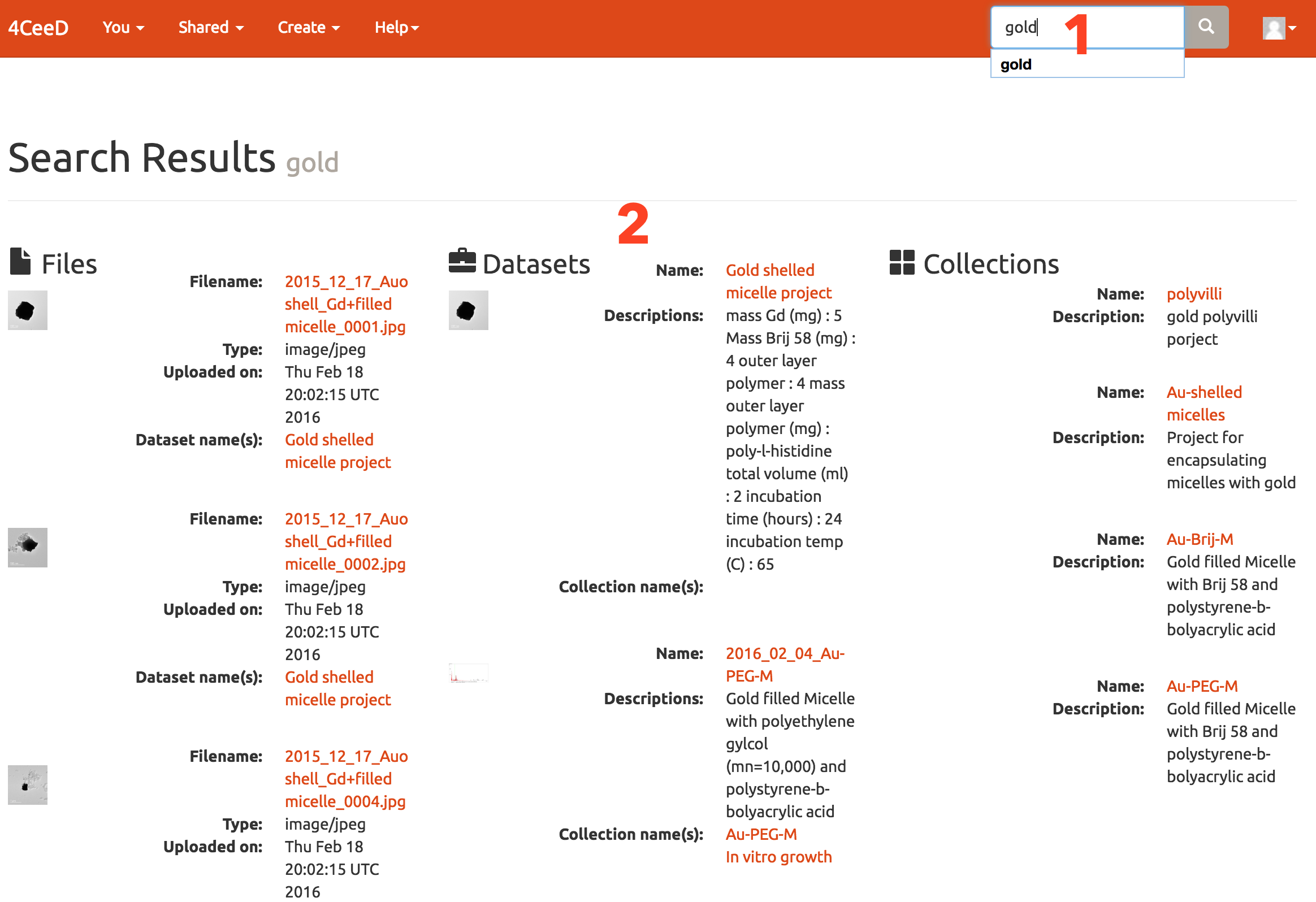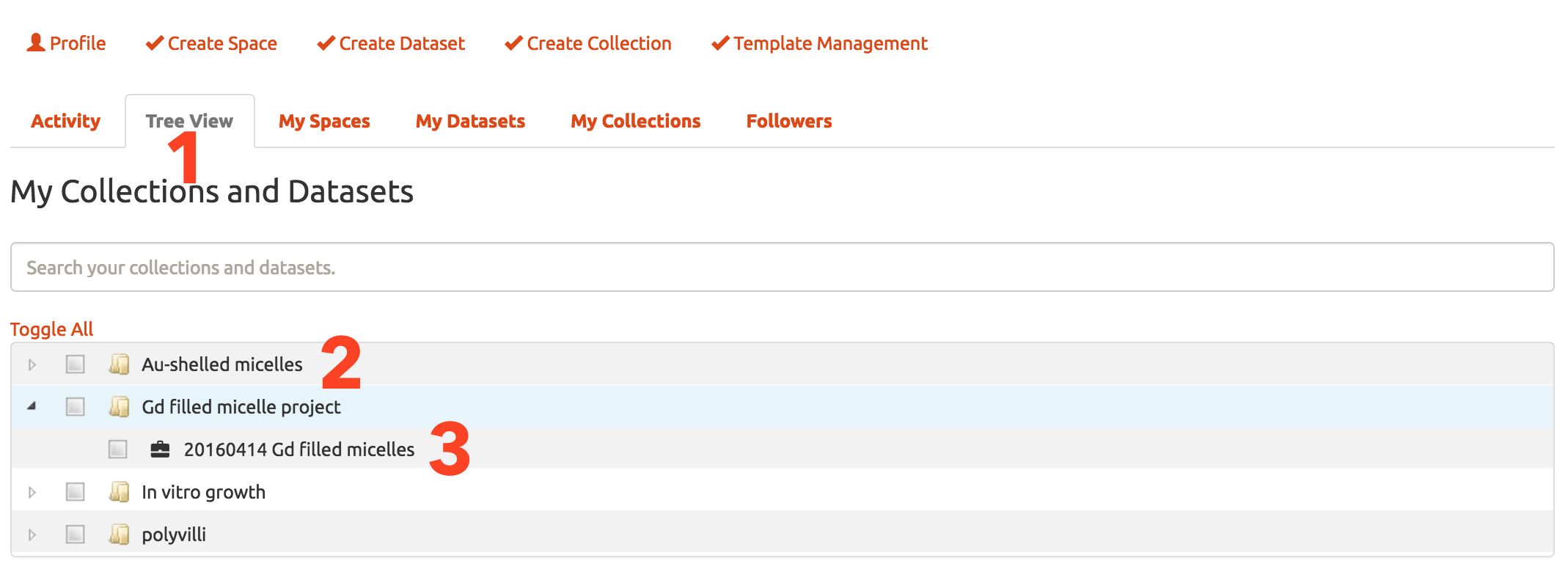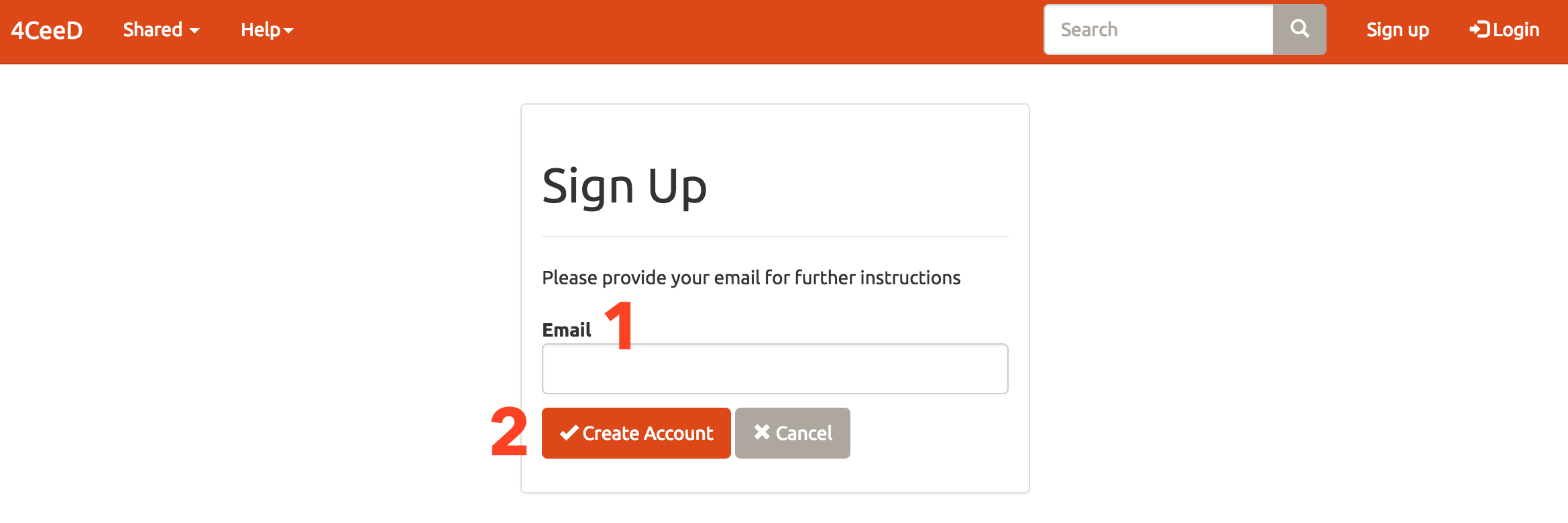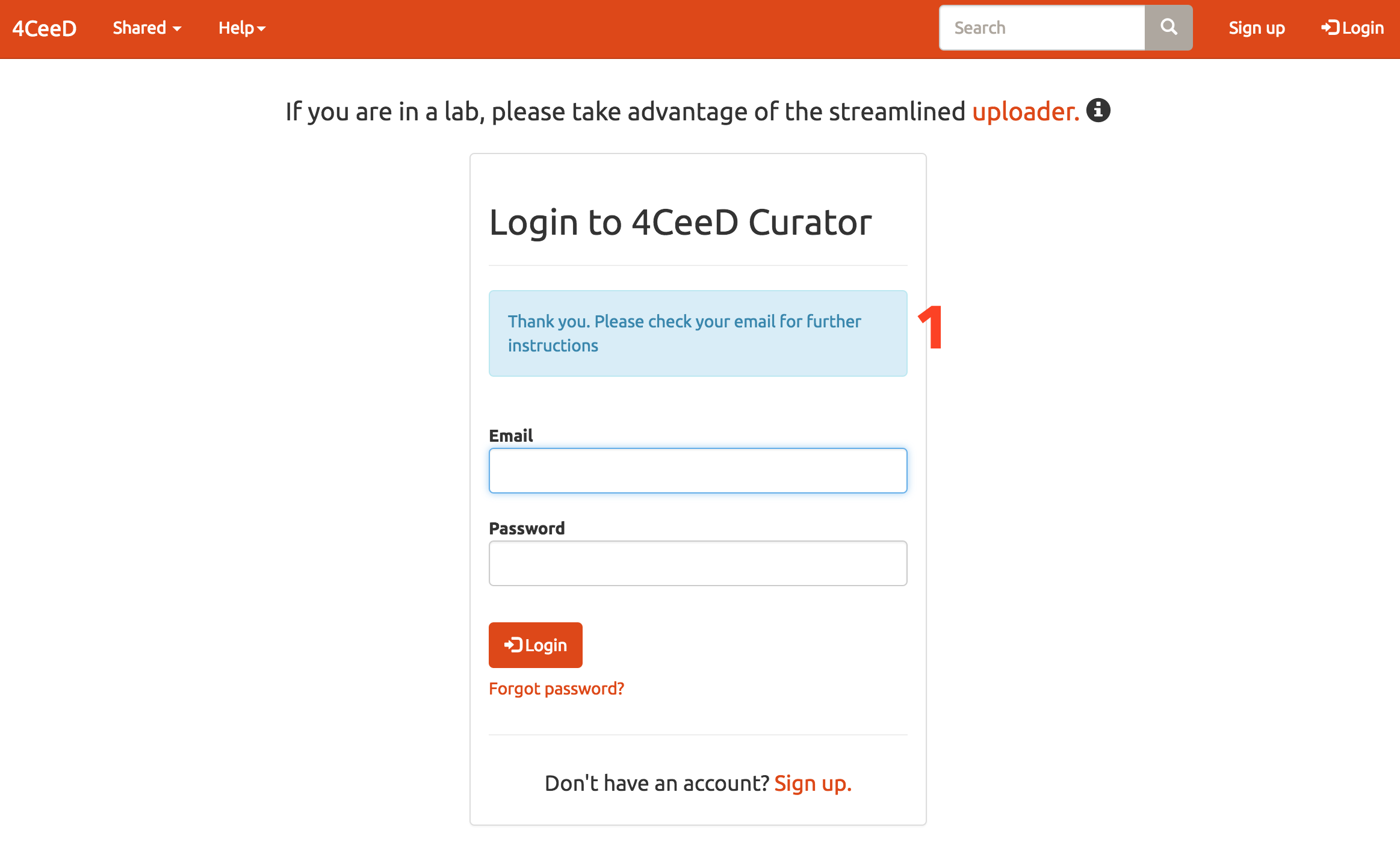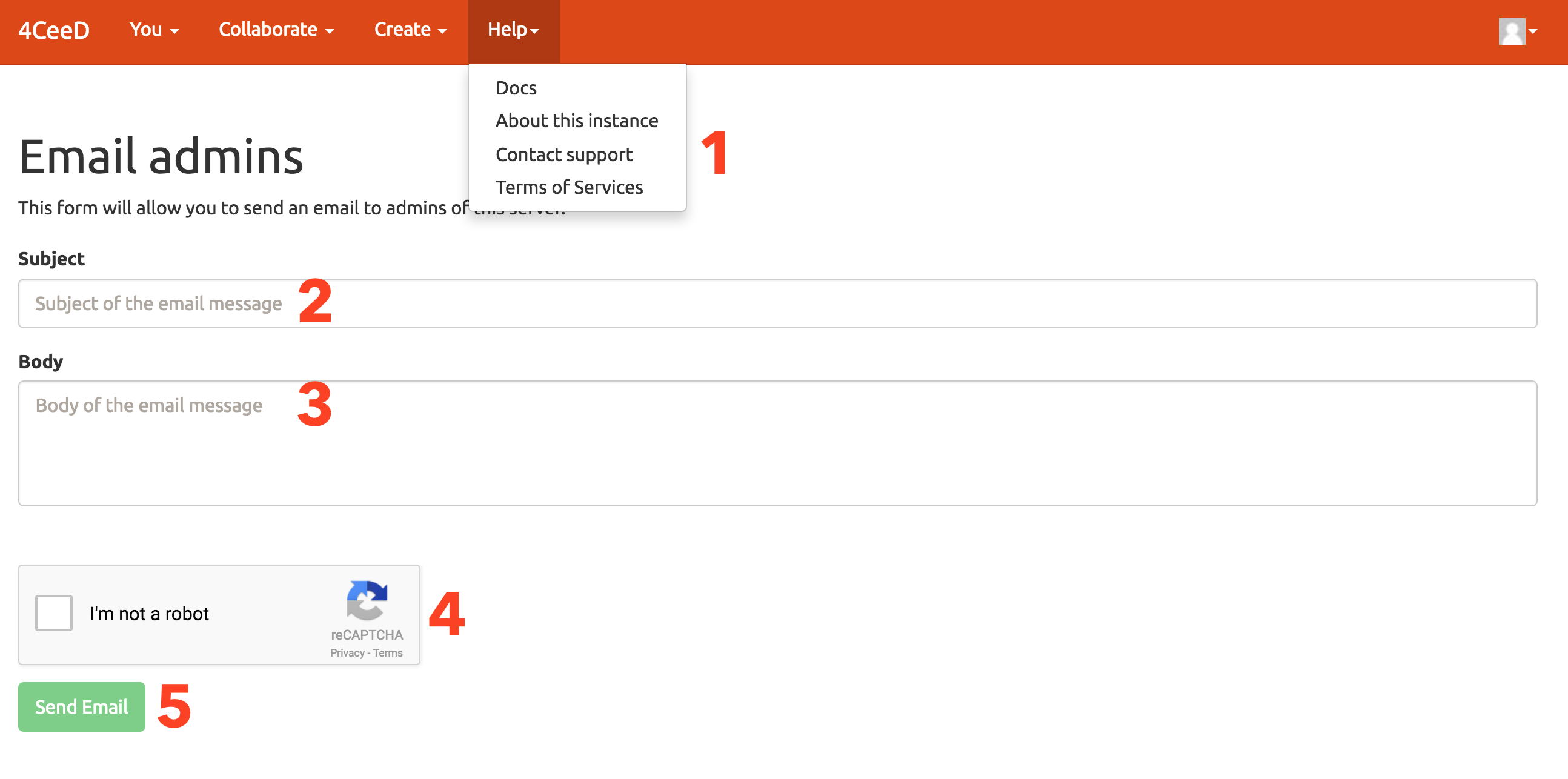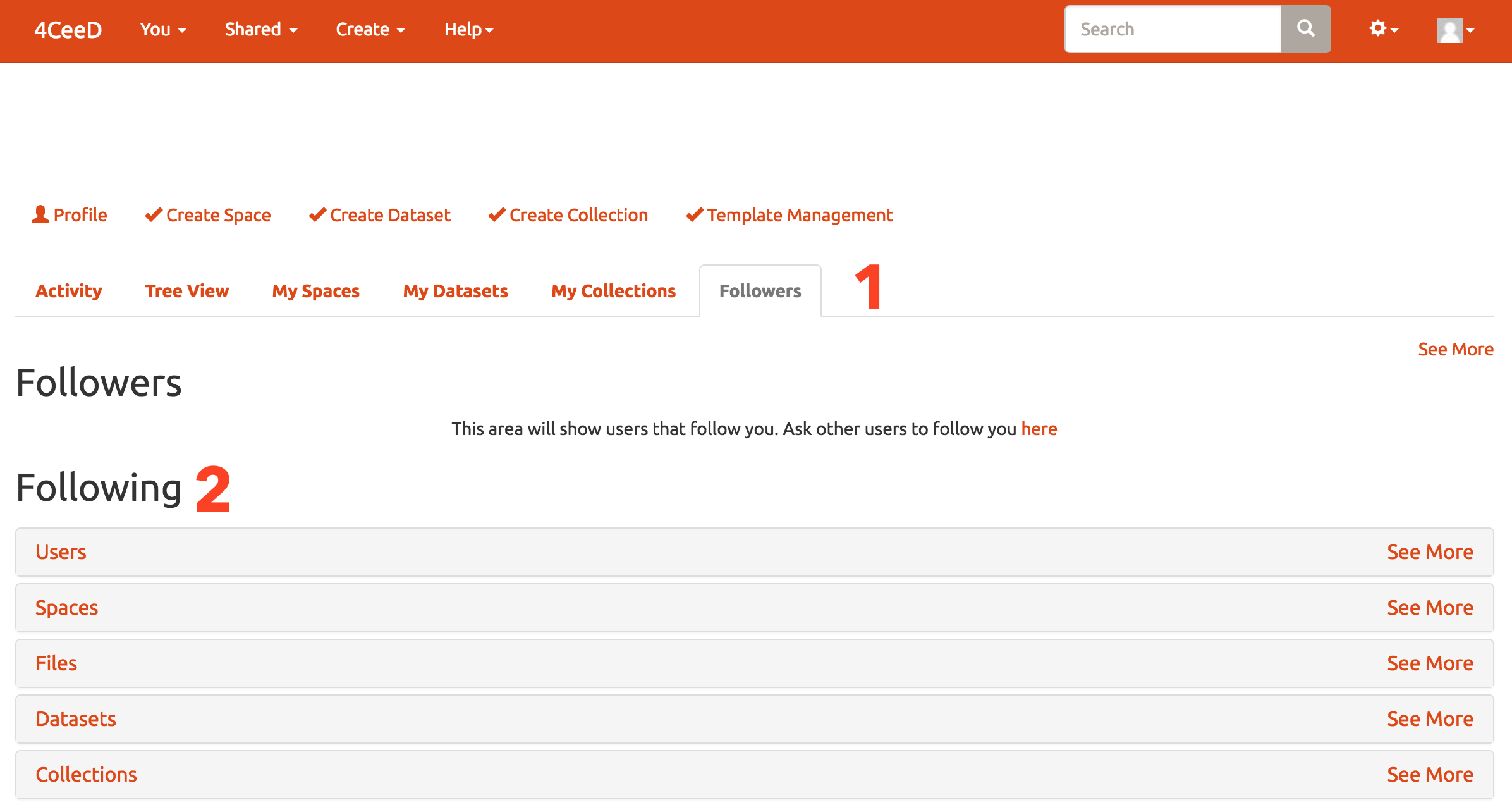4CeeD Uploader FAQ
What is this?
The 4CeeD uploader is a light weight web tool used to upload scientific data files and metadata descriptors to a local repository.
Why use this?
The 4CeeD uploader and curator replace outdated and inefficient methodologies used in many laboratories for data capture and storage.
How can the 4CeeD Uploader help me?
- Data gets stored to local cloud storage.
- Support for automating repetitive tasks.
- Use templates for reliable user defined meta data entry.
How can the 4CeeD Curator help me?
- All accessible data can be downloaded with its data-model hierarchy preserved.
- Extractors pull descriptive metadata out of files and instrument logs for analysis and discovery.
- Get reliable calibration data and how to reference it.
- Share your data and use powerful free-text and faceted search for comparisons.
- Broad set of customizable access control rules.
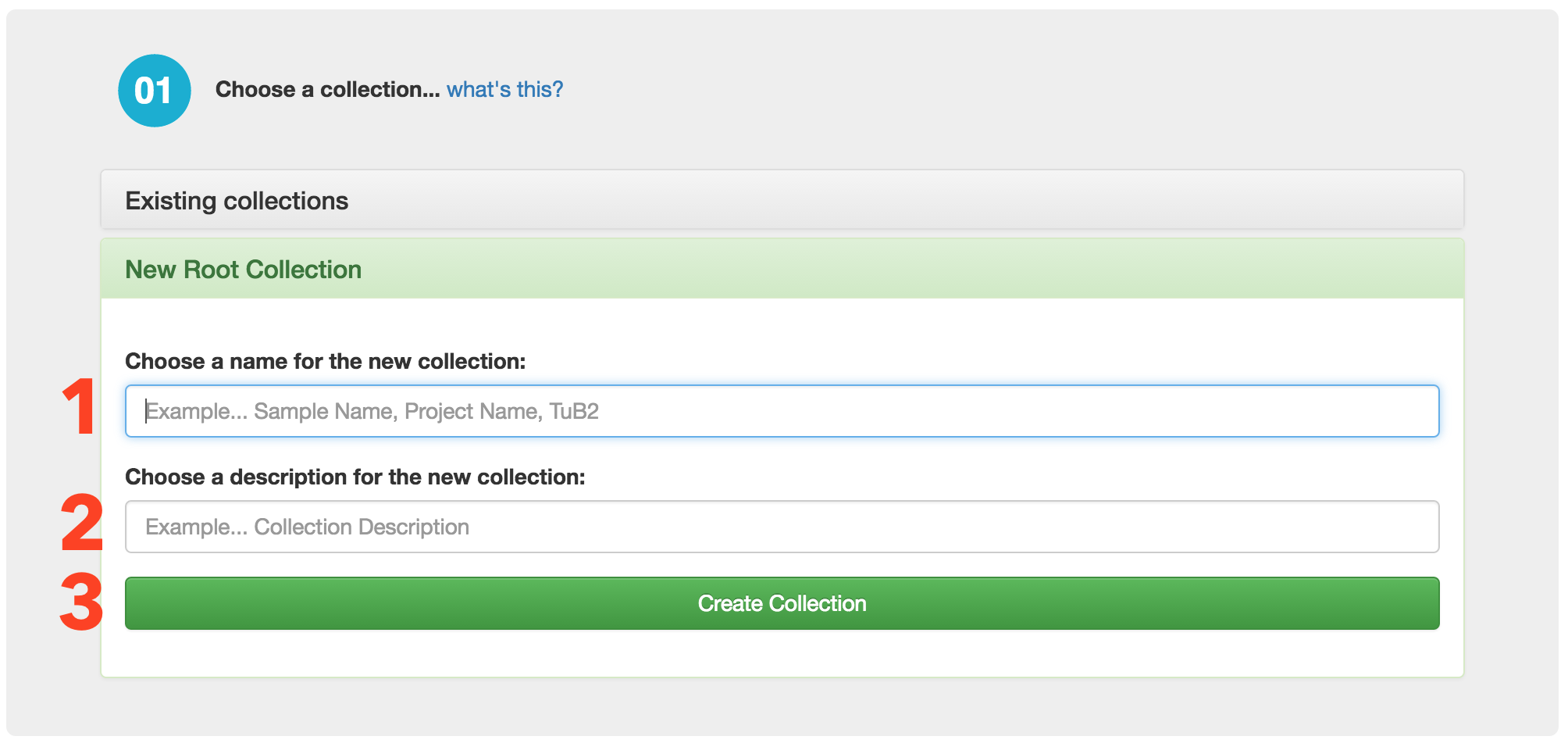
1. Give your collection a name.
2. Give your collection a description.
3. Click the create collection button.
A new root level collection is created.
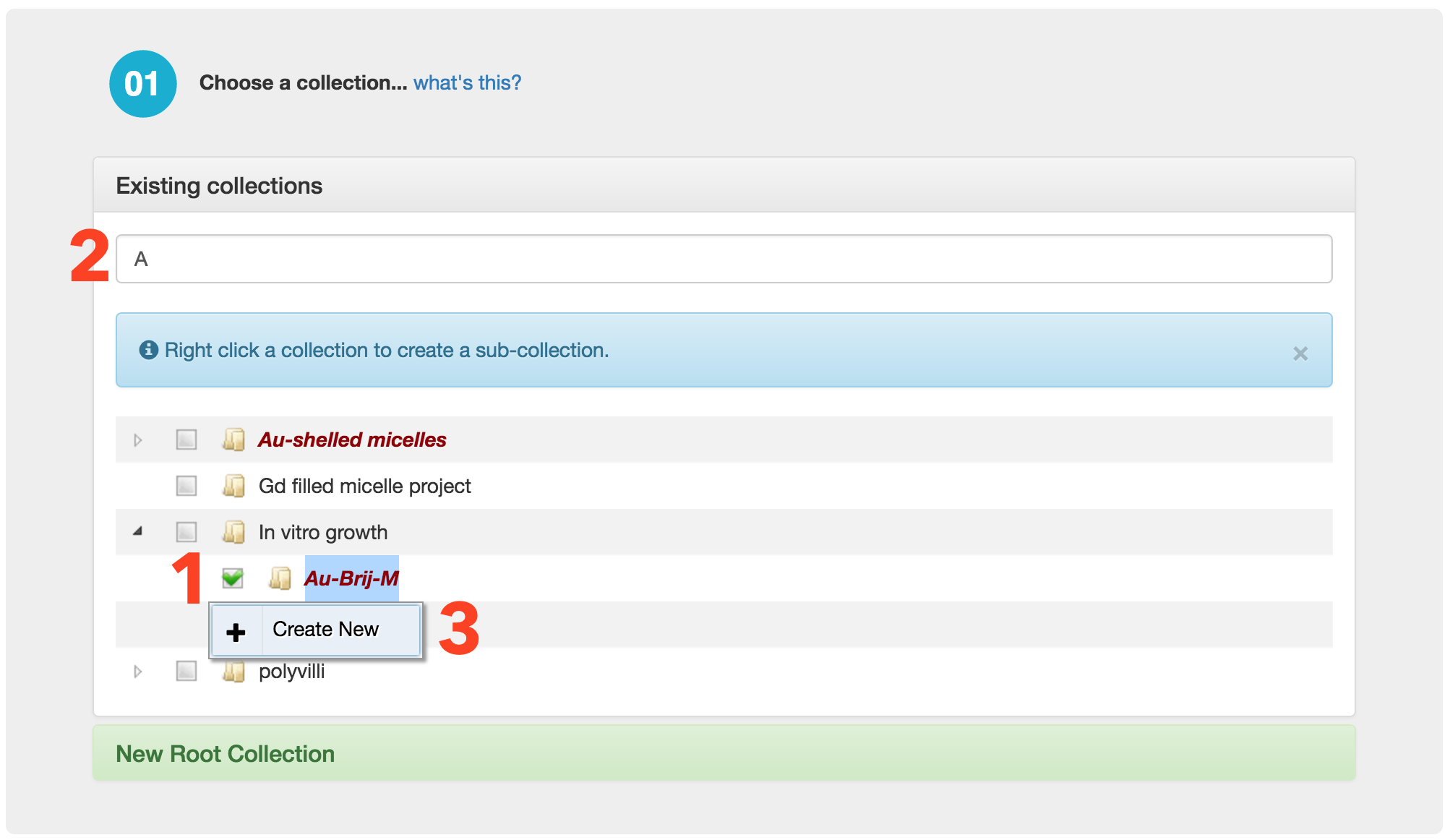
1. Select a root or sub collection
2. (Optional) Enter text to search for collections.
3. (Optional) Create a new sub collection by right clicking the parent.
A parent collection is selected or a new sub collection is created and selected.
For example, [.png, .dm3, .tif, .txt, .jpg, .ibw]
Atomic Force Microscopes, and Xray.

